- Start Free Trial
- Write for Us


How To Write the Perfect Salon Business Plan for Your Salon in Just 7 Simple Steps

The US salon industry includes more than 80,000 establishments with a combined annual revenue of about $532 billion. So opening a salon, and owning a salon business is a pretty safe bet; it’s steady and profitable . But lack of proper planning makes it difficult to juggle all the aspects of your business, starting from marketing and sales, to accounting, and whatnot.
Here’s a quick tip! Searched all over the internet for concrete information on how to open your own salon? Confused? Don’t worry, we’ve got you covered! Check out this blog on opening your own salon business that gives you a comprehensive 10 step guide to help you get started now.
Writing a properly structured salon business plan is crucial to guarantee your salon’s success in this highly competitive market. Whether you’re wanting to secure a business loan for your salon or trying to expand or reinvent your salon business, a business plan for your salon will help you get there.
So how exactly would a business plan help you?
- A business plan will help you to figure out what you want your salon to offer, where you aim to take your salon’s growth, what kind of people you want to cater to, and who you’re competing against .
- If you are looking for investment from private investors, banks, or any other lending institutions or public grants, structuring a business plan is crucial.
- A business plan will help boost your salon business’s productivity through improved oversight and direction, and help you make informed decisions.
- As your salon business starts to grow and gain clientele, a well-developed business plan can help you acquire the capital needed to expand to new locations.
How to make the perfect business plan for your salon business?
Whipping up a perfect business plan can be pretty daunting because it needs to be immaculate. No worries! Here we’ve broken down the entire process into 7 easy-to-follow , foolproof steps, along with their templates, to help you create a successful salon business plan.
- Write a mission and vision statement
- Create an executive summary
- Analyze and identify your target market
- Perform a competitor analysis
- Write your salon’s business description
- Make strategies for advertising and outreach marketing
- Figure out your financial plan
Whether it’s a hairdressing salon business plan, a general beauty salon business plan, or even a small salon business plan for opening a salon on your own from scratch, we’ve got you covered. This is a complete, comprehensive guide to help you in the process of making a business plan for a salon. It’ll give you a basic understanding of how to write a salon business plan in the easiest possible way.
1. Write a mission and vision statement
I) mission statement .
It articulates the immediate purpose of your salon business. Under this, you can state all the short-term goals that you plan on achieving with your salon within 6 months , stretching up to a year.
Here’s how you can nail a perfect mission statement
- Value – What is the value of your salon in the market? How can it help your clients?
- Inspiration – Why should people want to come to your salon?
- Remember to make your mission statement sound plausible and reasonable . Also, make it specific and concise – clarify all your short-term goals and the timeframe within which you’re planning on achieving them.
ii) Vision statement
Now, where do you aim to take the salon’s growth in the next 5 years ? Well, if you’re dreaming, dream big! And you can be as ambitious as you want, the sky’s the limit.
Setting strategies for a longer-term makes sure that you don’t stumble on the road to success. It makes the overall structure of your business stronger. It prepares you for anything that the fickle market demands from you and throws at you.
Here’s how you can write a perfect vision statement :
- Review your long-term goals in a way that you can analyze how achieving your long-term goals could impact your business and the salon industry in general.
- Derive how your clients could benefit from the visions that you would be implementing.
- Your business’ end goals can drive your vision statement, For instance, if you’re planning to branch out to different locations after, say, 5 years, you can frame your vision statement in a way that states to make your salon a household name, popular in the neighboring areas and so on.
2. Create an executive summary
After you write the mission and vision statements, you can summarize everything that you’re aiming to achieve with your salon under an Executive Summary. Whether you’re writing a business plan for a hair salon or a business plan for a beauty salon, you should be properly aware of what your intentions are with the salon. This section is the most important part of your business plan as it dictates the tone of your salon, and makes an impression.
Remember to keep this section very brief and concise to give an overview, as you’ll be elaborating on these points in the later sections of your business plan.
If you’re having trouble writing your salon’s executive summary, you can always write it after you’re done with all the other sections in the business plan . This will give you a better understanding of your salon business and help you succinctly put your points together to describe it.
What can you do to write the most fitting executive summary for your salon?
- Start by stating all the short-term goals that you plan on achieving within, say, 6 months or a year. Remember to keep your goals realistic and feasible.
- Summarize your approach towards your business, to give an overview of how you will run things in your business.
- Clearly and briefly express the value proposition of your salon, and how it would potentially position your business in your target market.
How to write your salon’s executive summary: A simple template
Divide your business summary into sections of opportunities and expectations, and put brief points in those subsections in the most convincing way. The following template can help you with this :
- How are you trying to achieve recognition in your target market?
- What is your salon’s tagline/motto?
- What is your salon’s growth plan for the first 6 months after its launch?
- Which demographic is your salon meant for?
- How are your services aligned with your target market?
- How many salons are there in the area of establishment of your salon?
- What products and services do they offer?
- What is the range of variation of their clientele?
- What products and services is your salon offering?
- What is the unique selling point of your business? For eg: If your salon is the only one in the area that offers holistic services with spiritual healing, then put it down as your differentiating point.
- How are you different from your competitors? For eg: Is it the lower cost of services of your salon, or the vast range of services that make your salon stand out?
Make sure you catch the eye of potential investors in the above section. Don’t forget to state how you can attract potential customers.
- What is the salon costing you? List down the projected expenses and costs that come from daily operations, rent, staff hiring, cosmetics, appliance expenditures, etc. for the first 6 months.
- What is the cash flow and how much profits are you bringing in for the initial 6 months? This is completely variable and the reaction of your target market to your salon decides this. So aligning your services with them is of utmost importance.
- Why does your salon need financing? For eg: you can convey that you’re trying to meet the anticipated growth of your salon in the market.
3. Analyze and identify your target market
Analyzing and defining a target market for your salon is very important as it goes hand in hand with your salon’s growth and outreach .
A beauty salon can service all genders and age groups. Your target audience can include working professionals, college students and teenagers, homemakers, to-be-Brides, and even children. And each group will require different types of services. So make sure you list down each individual section of your target market and what services they would require.
Here’s a checklist to make sure you’re going the right way about it.
Steps to analyze and identify your target market
- Find out what kind of people you think would resonate with your salon’s services the most. For example, if your salon offers low commitment (temporary) coloring services, you can get a lot of customer traffic from the millennials.
- As an extension to that, find out if your services are more inclined to serve a particular demographic better, or if you’re good with people of every demographic.
- Keep up with the trends in the salon industry to know what’s hot and what’s passé.
- Peek inside the brains of your target clients to know exactly what they want or like and tune your salon accordingly.
An easy-to-follow template to proceed with your target market analysis
- Segregate the people in the market pool into different categories.
Do not forget these bases:
- Personal income/occupation
- List out the services that your salon would offer that would fit one or more of the stated categories above.
For eg: If your salon offers Diamond Facial at $200.00, then you can list this service out as follows :

- Use social media to get an understanding of the trends in the market at present. Join salon and beauty communities on Twitter, Facebook, and Reddit, and follow beauty bloggers on Youtube and Instagram.
- Look up the people who subscribe to or follow these beauty pages and beauty bloggers to identify which trends appeal to a certain demographic. You can tell a lot about your target market’s behavior from the posts they like and the thoughts they share in the comment section of these posts and videos.
4. Perform a competitor analysis
With a great market demand, several strong competitors emerge. And we don’t want your salon to get lost in the sea of other salons now, do we? As it goes, keep your clients close but your competitors closer.
Figuring your competitors out gives you a necessary nudge in the right direction to take your business plan forward. It gives you an idea of what the other salons are practicing with their clients, and what gaps they’re leaving that you can fill up as you step into the salon business yourself.
How do you analyze your competition?
- Find out what the other salons in the area are doing successfully or poorly.
- Get a rough idea of the cost of services that the competitor salons are offering. This helps you price the services for your salon.
- Identify how many salons provide services that focus on a specific niche and do not serve a wide group of customers.
- Find out the industry-specific challenges they are facing that you may also face while running your own salon.
- Analyze what they can do differently to improve their situation, and implement it in your business mission plan to avoid facing such challenges yourself.
- Have your salon address these deficiencies in the market.
Follow these easy steps to perform your salon’s competitor analysis
- Visit your competitor salons’ websites.
- Follow them on social media platforms (Facebook, Instagram, Linkedin) to get an idea of how much influence and reach they have. Check out who follows their social media page to get an idea of the target market as well.
- Sign up for any interactive sessions that these salons might conduct and check how other people respond to these sessions, to understand their grip and dominance on the market.
- Visit the other salons in the market as customers, to get an idea of their quality of services.
5. Write your salon’s business description
So now that you have your market and your competitors figured out, it’s time to work on your salon business . A beauty salon or a hair salon is fine, but what kind of salon do you want yours to be like? Setting a proper description for your business gives your salon a custom style and personality.
Your business description should include an overview of the products and services that your salon would offer, and how your salon would stand out in the market. Setting a trademark vibe to your salon also helps with its brand image.
To get started, you can answer the following questions :
- Would you specialize in any particular service like nail art or bridal makeup?
- Would you want your services segmented for various types of clients?
- What services would you want to offer in packages?
- Would you serve complimentary refreshments to the clients?
- What theme are you going for with respect to interiors and ambiance (Japanese zen, tropical beach day, etc, etc)?
- What would be your salon’s “it” factor that distinguishes it from the other salons in the area?
Once you’re done with the salon’s description and personality, set a brand logo and a tagline to go with it. To get a professionally designed custom logo, you can always reach out to freelancers or companies that can do it for you, like 99designs .
You can also use an online designing software like Canva to design your salon’s logo on your own.
And that should complete the branding.
Creating a business brand will prepare you to answer someone asking you “Why should I come to your Salon?”
Remember to make your salon stand out, noticeable, and interesting.
6. Make strategies for advertising and outreach marketing
Now you have to position your salon in the market in a way that makes people take an avid interest in “the new salon”. Your target audience will guide you towards the perfect approach to spread the word around about your salon.
A simple guide to writing the marketing plan for your salon business :
- Your salon should be Google-able. To show up in digital searches, make sure your business is listed in online directories.
- Create a website or a mobile application for a better customer experience.
- It’s always better to spread out to all social media platforms to promote your business so that your customers (and other potential clients) can get to know you on a more personal level. Connect with your business community by following other small businesses in the area. Actively engage with your target market and share behind-the-scenes content (like before and after photos of clients’ haircuts) to build your credibility and cultivate brand awareness.
- Partner up with other businesses that may share the same clientele as a salon would (like spa retreats) to offer coupons and vouchers, for outreach marketing.
- Offer “first-service” discounts to your customers.
- Keep service rates lower than the other salons in the area to attract clients.
- Once the rapport is established, and your clients trust you with the service quality, you can cut out the discounts. It is also very important that you optimize the discounts in a way that you don’t run into a complete loss, but we’ll get to that in a minute.
- It is crucial to maintain the service quality to the highest degree after you start getting clients. Remember that your clients wear the marketing after they come out of your salon. This will definitely help you secure referrals from existing clients.
Marketing Tip! Want to pull off a great marketing campaign for your salon business but don’t know where to start? Do you feel like the marketing section in your business plan is incomplete? For more detailed marketing ideas for your salon, check out our blog on 7 hand-picked salon marketing ideas to boost your business .
7. Figure out your financial plan
It’s time to play the number game. This is probably the trickiest part of writing a salon business plan because you have to be extremely careful while juggling your revenue and expenditure budget optimally.
You don’t want to scare or throw off your customers by charging exorbitant prices for the services, but at the same time, you don’t want to crash and drown in debt yourself. Not to forget, cutting costs on cosmetics may affect the service quality. Cut hair, not costs!
Ergo, you need to have a proper financial plan for your salon.
Writing a detailed financial plan will help you get a rough idea of how your salon would be progressing on a monthly/ yearly basis. Moreover, if you’re applying for a loan, your financial plan will determine your eligibility .
What can you do to create a solid financial plan for your salon?

- It helps to bifurcate all the expenses into Fixed costs, and Variable costs. Then you can analyze your fixed costs and variable costs to set an optimal budget.
Fixed Costs: This section includes all the costs associated with your salon business that must be paid regardless of the customer traffic in your salon.
- Rent or mortgage for the salon space.
- Payroll for the employees you hire.
- Equipment maintenance costs for hair spa and other services that are heavily equipment dependent.
Variable Costs : This section includes all the costs in your salon business that are directly associated with the customer traffic in your salon.
- Expenses of purchasing cosmetics and other salon supplies.
- Electricity consumption by salon equipment. For eg: If you’re writing a hair salon business plan, make sure you include the electricity consumption by blow dryers, hair straighteners.
- Have a clear idea of how much discount you plan on putting on your services during the first few months of opening your salon, and for what duration you will be offering these discounts. Note that during the first few months of opening your salon, your sales are likely to be lower than your projections, and that’s completely okay.
- Make a list of pros and cons for renting out space for your salon versus buying a place.
- If you’re renting and wish to own the salon space, spot out a tentative date of when you’ll become capable of buying the place.
- Figure out how many people you are going to hire in your staff, and how much salary you would be able to offer them. Note that you’ll have to improvise this according to how the customers respond to your salon.
- Reach out to your local chamber of commerce to get more insights on funding and loans.
- Tentatively figure out the time it will take you to break even, and start earning chunky profits.
Here’s an easy-to-follow template to proceed with your ‘financial plan’ section
The following simple template can help you make the financial plan for your salon:
i) Sales and revenue projections for the first five years :
Figure out how much you’ll charge for your services, and estimate how many services you may perform in a week. A periodic analysis of this over the next five years will give you the necessary projections. Put the details down in a spreadsheet to keep it organized. It also helps to collate all this information and analyze using bar graphs.
ii) Expenses’ budget :
Break down the expenditure of your salon for a given term, by referring to the “fixed and variable costs” list that you made. You can pick the term to be a month, a quarter, or a year long .
It’s a safer practice to stick to a month-long or a quarter-long term. You don’t want the budget analysis task to loom over you and become a burden. Not to forget, it keeps you in touch with the financial status of your salon business.
iii) Estimated profit margins:
Accumulate the sales projections and budget report analysis to find out the profit for that term. Display the margins in pie charts or bar graphs for easy comprehension.
iv) Liabilities:
Note all the losses that your salon business can possibly incur in the time period that you have defined as a term. For example, your blow dryers may stop functioning and need to be replaced.
Also include the factors that may stunt your business from growing. For example, you may be short on staff, or your nail salon is lacking an appointment scheduling and business management tool.

v) Cash flow statement:
Make a projected plan of cash flow-in and flow-out for your defined term, where you include cash flow from sources that are not directly related to your salon services or your salon business-related expenses.
Include the cash flow from loans, loan payments, taxes, and personal funds that you used for your salon.
vi) Break-even analysis:
Predict the break-even point for the first five years of your business. Break-even is achieved when your salon business has covered all the expenses, and your sales surpass the expenditure costs. From that point on, your salon will start earning profits.
Other ways to create your financial plan :
Dealing with numbers can be tedious and scary, especially when you already have a lot of other things on your mind as a salon business owner. Moreover, documenting the financial projections yourself can be a pretty daunting task, especially because there’s no room for mistakes.
Instead of making the document yourself, you can choose to consult professionals to help you write the perfect financial plan for your salon.
- Hire freelancers : You can collaborate with business plan consultants to make your financial plan. All you need to do is give them your salon’s budgetary estimates and inputs.
- Use Financial planning tools : It asks you to enter all your financial information. They use built-in formulas to give you the most accurate financial statements that include all the charts and projections that an investor would expect to see in a business plan.
Some important things to keep in mind :
- Keep reviewing the target market, competitor analysis, and marketing and advertising strategies once every while, however frequently necessary.
- Set realistic long-term goals that would be in sync with your current business performance. For example, you can think about branching out to two different locations after a few years. This will allow you to expand your local salon to an enterprise salon.
Go ahead with the pretty business plan

Executing a well-structured salon business should reap good-looking numbers. And the first step towards that is making a killer business plan for your salon.
It gives you the courage to place your faith in your business, and we don’t want you to doubt something you’re passionate about. Remember that you can convince the people in the market about all the great things your salon has to offer, only when you truly believe it yourself.
So go on ahead, start creating your salon business plan today, and give your dreams a much-needed flight. Good luck :))
About Appointy We at Appointy, help business owners grow and run their businesses with our online scheduling software. This blog was a part of our ‘Manage your Business’ category, where we provide expert tips, and resources, or simply talk about the challenges that small and medium businesses face every day. If you have any thoughts on this blog or would like to chat about your business struggles and achievements, let us know in the comments below. We love a good talk!
25 comments
Am really satisfied thank you
The blogs are really appreciable and one can trust the knowledge and information provided in the writing.
This blog was so helpful.. I really appreciate they way it was broken down and easy to understand.
Thanks Brittany 🙂
Very nice article .Thanks for sharing this great post.
Thanks a lot 🙂
Thanks this blog really helped me now I know where to start
Happy to help! 🙂
Great information. It’s really useful. Please shares these kinds of information in the future.
Thanks! Please subscribe to https://blog.appointy.com/ for more such information.
Very Informative thank you so much for this wonderful article
good article
Interesting & informative to read, thank you for sharing this article with us. it’s really helpful to me. Can you suggest something on started a homemade business plan?
Very nice content about salon buisiness,Its very informative.
Very insightful blog post. Thanks for sharing
The perfect salon business plan requires defining your vision, researching the market, outlining services and pricing, addressing operations and finances, and emphasizing exceptional customer service
It is really helpful. Thank you for the content
Thanks for your content, it is very helful.
Let this be a guide for those starting salon business. Thank you for the blog.
Thanks for the information
Very well said! All your tips and advice is so helpful.
Thanks, Peter! 🙂
You are welcome Netra! You have a great blog, indeed!
Thank you for the blog. Its very helful
Leave a Reply Cancel reply
Your email address will not be published. Required fields are marked *
Save my name, email, and website in this browser for the next time I comment.
Notify me of follow-up comments by email.
Notify me of new posts by email.

Learn how to grow and manage your salon business like a pro!
Subscribe now and get valuable insights from credible sources - delivered straight to your inbox!
We promise to never spam you :)
You have Successfully Subscribed!
Upmetrics AI Assistant: Simplifying Business Planning through AI-Powered Insights. Learn How
Entrepreneurs & Small Business
Accelerators & Incubators
Business Consultants & Advisors
Educators & Business Schools
Students & Scholars
AI Business Plan Generator
Financial Forecasting
AI Assistance
Ai pitch deck generator
Strategic Planning
See How Upmetrics Works →
- Sample Plans
- WHY UPMETRICS?
Customers Success Stories
Business Plan Course
Small Business Tools
Strategic Canvas Templates
E-books, Guides & More
- Sample Business Plans
- Beauty Salon & Fitness
Hair Salon Business Plan

Things to Consider Before Writing a Hair Salon Business Plan
Find your usp.
A hair salon gives several services including cutting, coloring, styling, and hair care. Apart from that, your customer service, prices, and a lot of other things make your services a package deal for your customers.
But out of everything that makes up your business, you have to do something that you do differently or better than your competitors. This would help you stand out and become memorable to your customers.
Build your client base
Although this is an ongoing process, getting a head start with building your client base is essential. Know what sources you can use to reach out to your clients, what makes them pick a hair salon service, what makes them come back, and so on.
Knowing these things gives you an edge over businesses that dive right in without an action plan.
Find the ideal location
The ideal business location will be both accessible and functional. A good location for a hair salon would be either located in a busy neighborhood or a place that people frequent between home and work.
A good location makes accessing your services more convenient and hence more in demand.
Design your salon for both form and function
Although, it is advisable to hire a designer to design your salon in a way that is functional and also looks appealing. But cash crunches, startup costs, and whatnot might leave lesser scope for a designer in your budget.
In such a case, you can design your salon with the help of catalogs, outside inspiration, and your creativity to make it as functional as possible and build upon and redesign it as your business grows.
Writing Your Business Plan
If you are planning to start a new hair salon business, the first thing you will need is a business plan. Use our sample hair salon business plan created using upmetrics business plan software to start writing your business plan in no time.
Before you start writing a business plan for your new hair salon business, spend as much time as you can reading through some samples of hair and beauty salon business plans .
Reading some sample business plans will give you a good idea of what you’re aiming for and also it will show you the different sections that different entrepreneurs include and the language they use to write about themselves and their business plans.
We have created this sample hair salon business plan for you to get a good idea about how perfect a hair salon business plan should look and what details you will need to include in your stunning business plan.
Hair Salon Business Plan Outline
This is the standard hair salon business plan outline which will cover all important sections that you should include in your business plan.
- Business Overview
- Our Services
- Goals and Objectives
- Keys to Success
- Katarzyna Doe
- Legal Business Description
- Hiring Plan
- Products & Services
- Market Trends
- Target Market
- Market Analysis
- Customer Profile
- Competitive Summary
- Competitive Advantage
- Sales & Marketing Strategy
- Sources of Income
- Sales Forecast
- Pricing Strategy
- Publicity and Advertising Strategy
- Personnel Plan
- Startup Costs
- Important Assumptions
- Profit & Loss Projections
- Balance Sheet Projections
- Cashflow Statement
- Business Ratios
After getting started with Upmetrics , you can copy this hair salon business plan example into your business plan and modify the required information and download your hair salon business plan pdf and doc file. It’s the fastest and easiest way to start writing your business plan.
The Quickest Way to turn a Business Idea into a Business Plan
Fill-in-the-blanks and automatic financials make it easy.

Download a sample hair salon business plan
Need help writing your business plan from scratch? Here you go; download our free hair salon business plan pdf to start.
It’s a modern business plan template specifically designed for your hair salon business. Use the example business plan as a guide for writing your own.
Related Posts
Nail Salon Business Plan
Business Licenses Guide
Pricing Strategy for Business
About the Author
Upmetrics Team
Upmetrics is the #1 business planning software that helps entrepreneurs and business owners create investment-ready business plans using AI. We regularly share business planning insights on our blog. Check out the Upmetrics blog for such interesting reads. Read more
Plan your business in the shortest time possible
No Risk – Cancel at Any Time – 15 Day Money Back Guarantee
Popular Templates

Create a great Business Plan with great price.
- 400+ Business plan templates & examples
- AI Assistance & step by step guidance
- 4.8 Star rating on Trustpilot
Streamline your business planning process with Upmetrics .

Build a client experience
Run your business, grow your business, build your brand, size of business.

How to Write the Perfect Salon Business Plan in 6 Steps
Discover how to craft a winning salon business plan in just six steps! Boost your salon's success with expert tips, market analysis, and strategy insights.

No credit card required.

As a salon owner, having a well-thought-out business plan is essential to the success of your business. A salon business plan outlines your business goals, market analysis, marketing strategies, financial projections, and other key details, serving as a roadmap that guides you through the process of starting, running, and growing your salon. In this article, we’ll go over the key elements of a salon business plan and provide tips on how to write the best business plan for salons in 2023.
How Much Does It Cost to Run a Salon?
Before you start writing a salon business plan, it’s important to get an idea of the startup and ongoing costs. As we discuss in this article , the costs of starting a salon range from $62,000 for an existing salon to $90,000 for a new operation. With some of the expenses, you’ll incur one-time costs – other expenses will be ongoing such as supplies and inventory. Here are some of the typical costs associated with starting a salon:
Existing Salon
When you buy an existing salon, be it a hair salon or nail salon, you save on the costs of buildout, salon equipment , and salon marketing, assuming the salon already has some of these elements in place. Here’s what you can expect to pay for the following:
- Rent deposit: $4,500
- Buyout of current salon: $10,500
- Leasehold improvements: $15,000
- Equipment: $10,000
- Initial supplies: $8,000
- Initial inventory: $4,000
- Certifications and licenses: $4,000
- Marketing: $5,000
- Legal or consulting fees: $1,000
Grand total: $62,000
The upfront costs of building out a brand-new salon, marketing it to local clients, and getting the business up and running will likely exceed those of buying an existing salon. Here are the typical expenses you can expect to incur for a new salon:
- Buyout of current salon: $0
- Leasehold improvements: $35,000
- Equipment: $25,000
- Marketing: $8,000
Grand total: $89,500
You may also want to budget for the following:
- If you need a loan or financing to cover startup costs, expect to pay interest rates of 1.25% to 10%.
- Salon insurance ranges from $50 to $1,000 per month.
- Salon booking software and a point of sale (POS) system range from free to $500 per month. GlossGenius starts at an industry-low $24 per month with low payment processing fees and includes a website, a branded card reader, and other extras.
- A salon website can cost you thousands, but with GlossGenius, it’s included free! Beautiful and customizable, your website is packed with scheduling features and is easy to navigate, helping to increase bookings and future appointments.
How Profitable Is Owning a Salon?
If you owned a salon during the pandemic, no doubt you experienced your fair share of struggles between lockdowns, closures, and reduced business hours. According to Statista , the U.S. market size of beauty salons dropped from $69 billion in 2019 to $42.3 billion in 2020. Fortunately, things are beginning to look up for hair, skin, nail, and other types of salons, with the market valued at $53.6 billion as of 2022.
You can take advantage of the comeback by approaching your salon startup with a solid plan in place, a realistic budget, and a marketing strategy. A beauty salon business plan can help you identify any questions , opportunities, and potential roadblocks so you can have the best chances of getting funding, earning a return on your investment and achieving profitability. The more you control your expenses and market your business successfully, the more profitable you will be – so be sure to take your time creating a salon business plan for your needs.
6 Steps to Writing a Hair Salon Business Plan
The business plan is the most important document for any salon owner. It’s a formal, written plan that describes the future of your business and how you intend to achieve it. A good business plan will help you stay on track, get funding if you need it, and avoid costly mistakes as you navigate through choppy waters in this industry.
We know what you’re thinking – that a business plan is a monster of a document that will take a ton of time to create. But, it doesn’t have to be. In fact, you can pare it down to one page and still have an effective, clear document that outlines everything you (and any other interested parties) need to know about your new salon. Below are six steps to writing a salon business plan that will ensure your success.
Here are six steps to creating your salon business plan:
- Create an Executive Summary
- Map Out Your Branding Vision
- Research Your Industry
- Create a Client Acquisition Strategy
- Management and Operations
- Financial Planning
Let's dive deeper into each one.
1. Create an Executive Summary
The executive summary is the first section of your business and management plan and provides a brief overview of your salon business. This section should include your mission statement , business objectives, target market, products and beauty services, and financial projections. It should be concise, engaging, and compelling to grab the attention of potential investors, lenders, or partners. It also serves to clarify your goals so you can come back to them anytime you need a refresher or wish to update this information.
Your executive summary is just that: a summary. This means you do not have to get into every detail in this section; you’ll provide a more complete analysis in the individual sections of your business plan. Here are some key elements to include in the executive summary:
- An opening “hook.” The first sentence or two of your executive summary needs to draw in the reader; otherwise, your business plan might not get the attention it deserves. Grab your audience’s attention by sharing a compelling fact about your company, a memorable story related to your industry, or some other well-crafted description of your business that will make your business plan stand out.
- Summary of your business. Describe what your company does, what services and products you will offer, who will run the company, and other high-level details.
- Market analysis. Briefly describe the market landscape for your own salon to show there is a proven need for your services. Be sure to address who your competitors are, any advantages you have compared with others, and any research you’ve conducted to demonstrate there is a demand for your services in the area.
- Products and services. Highlight the specific services your salon will offer, any products you will sell, and any other information showing that your salon will fill the need you’ve described in your market analysis summary – and how you’ll do it better than the competition.
- Financial information and projections. Give your reader an overview of your business financials, including any current sales and profits, the funding amount you’re looking to acquire or any funding you already have, and your projections for growth.
- Future plans. Tell your reader exactly how you plan to use any funds you acquire and how their investment could pay off. Imagine where you want your business to be in a year, five years, and so on. Make it clear how funding will help you get there.
2. Map Out Your Branding Vision
Branding isn’t just about creating a unique identity for your business; it’s also about helping people connect with that identity and remember your name anytime they need your services. Branding helps both current clients and new customers recognize who you are and why they would want to seek out your salon. In your business plan, be sure to map out your branding vision by including:
- A description of your salon business. Describe who you are and what you do.
- Your mission and vision statement. Briefly summarize why your salon should exist, its primary objective, and how you plan to achieve your goals.
- An overview of your products and services, your pricing strategy, and any unique features or benefits that differentiate your salon from others in the market. Discuss the specific services you will offer and their price points, plus any product lines you will carry, such as hair care products, makeup, or skincare.
- A description of the target audience and customer demographics. Include relevant research on your market and the people who will buy what you’re offering.
3. Research Your Industry
This section should include a market analysis that provides an in-depth look at the salon industry, including trends, customer demographics, competition, and opportunities. It should also identify your target market and describe how you plan to reach them. This section should demonstrate your knowledge of the market and your ability to capitalize on it, with details on:
- The industry and trends. Provide an overview of the salon industry with relevant statistics, especially those that pertain to your area of expertise and geographic location.
- Your competition. Conduct a competitive analysis to gain insights into your competition, their marketing strategies, and the services and products they offer. The goal is to show how you will capture market share using stronger business strategies that set you apart from your competitors.
- Market segmentation. With market segmentation , you break down a larger target market into a smaller group of customers you plan to serve. Demographics such as age and income, geographic location, lifestyles or psychographics, and behavioral factors like price sensitivity or product loyalty are just a few approaches to market segmentation that you can consider for your business plan.
- SWOT analysis. The SWOT analysis is a way to assess your strengths, weaknesses, opportunities, and threats. It's an effective method for identifying your business strengths and weaknesses as well as external factors that may affect the success of your salon business.
4. Create a Client Acquisition Strategy
The client acquisition section of your salon business plan should describe how you plan to attract and retain customers as a hairstylist . It should outline your advertising and promotional strategies, such as social media marketing , SMS marketing , email marketing, and referral programs. This section should also discuss your sales strategy, including how you plan to increase sales and generate revenue.
- Description of marketing channels and tactics . Outline the different channels you will use to generate leads, such as social media, blog articles, emails, and text messages.
- Sales forecasting and projections. Discuss how you will convert leads into clients, nurture them through the pipeline, and retain a loyal clientele. Include a realistic estimate of the quantity of goods and services you can sell within the forecast period (for example, monthly, quarterly, and annually). For a salon business, it’s helpful to determine the customer lifetime value of your typical client as well as the customer acquisition cost. You can then break down this number for the forecast period to determine the costs and sales projections.
- Customer acquisition and retention strategies. Include which strategies you will use and the associated costs, such as pay-per-click (PPC), search engine optimization (SEO), and paid ads on social media. Describe how you will retain customers – for example, through loyalty programs and responses to feedback and reviews on social media and Google.
- Pricing strategy. It’s critical that you price your services and products competitively to drive revenue and profits. Detail the pricing strategy you plan to implement based on your buyer persona and competitive analysis. The strategy could be based on a variety of factors, but geographic location and local competition will likely be the biggest factors dictating your salon pricing strategy.
5. Management and Operations
The management and staffing section of your salon business plan should describe the organizational structure of your salon, including the roles and responsibilities of each staff member. It should also discuss your hiring and training practices, employee benefits , and compensation plans. This section should demonstrate your ability to attract and retain a skilled and motivated team, with information on your:
- Organizational structure. Spell out who runs the show and who reports to whom.
- Management team and staff. If you plan to hire a manager , look for someone who has experience in the industry and understands what it takes to run a salon. This person should also have good people skills and be able to work well with others.
- Business operations and processes. Consider which other support personnel you will need, such as an accountant and a dedicated marketing specialist. Don’t be a hero; you can’t do it all alone.
- Legal and regulatory requirements. Include information on any legal advice you will employ to stay compliant with local, state, and federal guidelines.
Note that with GlossGenius, you can manage your team and collaborate with them to make your operations run more smoothly. Our software helps you delegate, mentor, and partner with others based on customizable permissions that let you grant as much or as little access as you wish. Easily manage your scheduling, booking, commissions, and reporting from one intuitive dashboard.
6. Financial Planning
Financial planning is a crucial section to include in any salon business plan. A cash flow forecast shows the anticipated amount of money coming into the business, as well as what you will spend on expenses. It also projects growth over time, which allows you to make predictions about future revenue and expenses so that you can better plan for them in advance.
The best way to get started with your financial projections is by creating an income statement (also called a profit and loss statement), which breaks down all income sources by category (e.g., retail sales and commissions), along with their associated costs (e.g., salaries). This will help provide insight into where your profits are coming from as well as areas where they could improve. Here are some key areas to cover in your salon business and marketing plan:
- Revenue and expense projections. Your revenue projections should consider the number of clients you expect to serve, as well as the average price per service. Your expense projections should reflect all costs associated with running your salon, such as utilities, rent, and supplies.
- Capital requirements and funding sources. Detail how much money you need to start and run your small business, including all costs associated with opening the salon. Describe the funding sources that you intend to use for starting your salon business, whether from personal funds, salon loans , or investors.
- Break-even analysis and profitability projections. A break-even analysis is a financial tool that shows how much revenue you need in order to cover your fixed costs (rent, utilities, etc.) and variable costs (such as salons supplies and staff wages). Profitability projections show how much profit you expect from your salon business for each year of operation. This is based on your estimates of revenue and expenses. You can use this information when seeking funding from investors or lenders.
- Financial ratios and metrics. A financial ratio is a measurement of the relationship between two numbers, usually expressed as a percentage or a fraction. For example, the working capital ratio compares your current assets to liabilities; this metric allows you to measure liquidity. Include the appropriate ratios and metrics in your business to demonstrate your company’s financial health.
A well-written salon business plan is essential for the success of your business. It provides a roadmap for achieving your business goals, attracting investors, and securing funding. By following the tips outlined in this article, you can write the best business plan for your salon and ensure your salon’s success!
As you’re creating your salon business plan, remember to start your free trial with GlossGenius and give yourself the best chances for success. From salon management to payment processing, we’ve got your new salon covered – making it easier to get up and running sooner rather than later.
.png)
related posts
Join our genius newsletter.
Get the latest articles, inspiring how-to’s, and educational workbooks delivered to your inbox.
Run your business the smart and stylish way with GlossGenius
Lorem ipsum dolor sit amet, consectetur adipiscing elit. Suspendisse varius enim in eros elementum tristique. Duis cursus, mi quis viverra ornare, eros dolor interdum nulla, ut commodo diam libero vitae erat. Aenean faucibus nibh et justo cursus id rutrum lorem imperdiet. Nunc ut sem vitae risus tristique posuere.
Workbooks & more

Join our Genius Newsletter
Run your business the smart and stylish way with glossgenius..

HOW IT WORKS

© 2024 GlossGenius. All Rights Reserved.
- Contact Us

- February 27, 2024
How to Write a Hair Salon Business Plan
Are you thinking about opening your own hair salon? Or maybe you already have a salon and are thinking about opening another location?
Well, when it comes to opening a new salon business, knowing how to write a hair salon business plan can make or break your success. The good news is—we’re here to help.
In this article, we’ll go over the ins and outs of creating a hair salon business plan. This includes everything from market analysis and financial projections to your goals for the future. Having a plan will help you obtain funding and stay on track as you grow.
Let’s get started.
Do I Really Need to Write a Business Plan for a Hair Salon?
You wouldn’t drive from San Francisco to Boston without either a GPS or a map, right? So, you shouldn’t run a business without a plan either.
A hair salon business plan is a roadmap for your beauty business. Whether you have two chairs or 200, it’s essential for your ongoing success.
In fact, opening or expanding a business has a lot more at stake than a drive across the country. You may have saved or taken out a loan to start your salon. And you likely have employees or contractors who are dependent on your business sense, too.
A business plan gets you organized when you’re first starting out or opening a new location. Plus, it keeps you on track as you grow. You can reach or exceed your goals, but you must know what they are first. And you need to have a detailed set of strategies to use along the way.
Let’s go back to our road trip metaphor.
Suppose you want to get from California to Massachusetts. First, you figure out how many miles or hours the journey will take. Then, you divide that by how many miles or hours you can comfortably drive in a day. That’s how many days it will take. Finally, you plan overnight stops along the way for each of those days to make the drive doable.
A salon business plan isn’t much different. You probably have goals for things like:
- How much gross income you want to bring in
- How much profit you want after overhead and labor
- Ideal business model structure (e.g., booth rent vs. commission)
- Services you would like to offer clients
- Places where you’d like to open additional salons
Without a specific business plan for how to make them happen, those are just pie-in-the-sky dreams. You need a more granular approach to turn them into a reality.
For instance, how much money do you need to make each month to reach your desired net profits? If that’s how much you need to make each month, what do you need to make daily, assuming you’re open five days per week? How many chairs do you need to have? At what capacity do you need to operate?
Not to mention, you’ll almost certainly need a formal business plan if you want to get financing for your salon. Salon equipment and real estate can be quite expensive. A bank may loan you money to get set up, but only if they see you have done your homework first.
Lenders don’t want to back a business that is more likely to fail than to succeed. And new hair salons have an average success rate of 50% in the first three years of operation.
That means half of those businesses will fail. Most fail not because of a lack of talent or ambition but because the owner doesn’t know how to properly run a business. You can be the best hairstylist in the world. But if you consider things like business accounting and marketing, you will likely lose more money than you are bringing in every month.
Do you want to be in the 50% of new salons that thrive? Keep reading to learn the step-by-step method of developing a business plan for your salon.
RELATED ARTICLE:
Owning a Hair Salon: Your Launch Guide

How to Write a Hair Salon Business Plan: Step by Step
Below you’ll find information on each section commonly included in a business plan. But first, here’s a tip to help you make the most of these categories.
Use the SMART method for setting goals. What are SMART goals ? They are:
- Specific – highly detailed, not vague
- Measurable – able to be quantified with hard numbers and actionable items mapped out to achieve the goal you’ve set
- Achievable – doable within the framework of your business model
- Relevant – related to your salon today, not somewhere else or too far in the future
- Time-bound – tied to specific dates for end goals and milestones
Any time you set a long-term or short-term goal, ask, “Is it SMART?” If not, dig deeper to get the details you need to make it work.
Executive Summary
Think of the executive summary as the introduction to your salon business plan. It gives brief information about:
- The purpose of your salon and who it will serve
- Your business objectives (offer something novel, expansion, etc.)
- How your salon will be different from your competitors
- Why you think the business will perform well
For instance, you could talk about how you plan to open a salon in a busy urban area to cater to downtown employees. Your client demographic is primarily white-collar workers aged 25 to 45.
Your unique selling proposition , or USP, is what makes the salon special. Say it’s that it will offer 20 and 50-minute appointments to fit into standard lunch breaks. Additionally, you’ll have 10-minute appointments for fast services during coffee breaks.
Customers can get a quick trim on their fringe or ends. Beard and mustache trims are another rapid service you will offer. Everything can be booked and paid for online to streamline the process and get customers in and out in a jiffy.
Maybe after work hours, your salon will be open for more traditional appointments. And you’ll have more quickie services available for businesspeople going out at night. They can get an updo, blowout, or style refresh before a date. On Fridays, you’ll offer manicure services too.
In your business plan, you’d want to outline howyour USP will help your salon be successful. For our example, you might say you believe the salon will do well financially because of three factors:
- The area is currently underserved by hair salons.
- You are catering to the needs of businesspeople in your locale.
- You hired an experienced stylist who’s bringing their clients with them.
You don’t have to get into a ton of detail yet. This is a proverbial bird’s eye view of your business proposition. You could, however, outline a rough roadmap of how you envision your business will start and where you see it going in one year and five years.
For instance, perhaps you plan to start with one location and 10 chairs. Five years from now, you want to open two additional locations. At that time, you will add new services like brow waxing and makeup consultations.
You can mention market analysis in this section, too. Market analysis looks at competition and consumer needs in your niche. However, there will be a place later in your business plan to address this in more detail.
Remember, your executive summary is an investor or lender’s first impression of your salon business. Therefore, you want to make it shine.
Company Description
This section goes into detail about the structure of your company. How long have you been in business? Who are the owners and managers?
You’ll also want to review how many employees or contractors you plan to have. Will they be employed under W2 status, or will they contract as 1099 workers?
Will hair stylists pay you a fee for the use of a chair? Will your salon take a cut of their fees? How will tipping be structured?
For example:
- Our salon is a startup organization that is not yet in business.
- It is co-owned by two stylists who participate 50-50 in leadership.
- There will be 10 chairs in total in the salon.
- Eight contract stylists will be working as 1099 independent contractors.
- Contract stylists will pay a monthly chair rental fee and a percentage of their billables to the owners.
- All tips will go to the employed stylists, with a percentage going to a shampoo assistant.
- Contract stylists make a commission on products sold in the salon.
- You will also have two paid receptionists who will be W2 employees.
You will go into more detail about financials in the Services and Pricing section. But this section should give readers an understanding of the basics of your planned salon operations.
You can also include funding or investing requests in this section. Again, you will have further opportunity to dive into financials later. But touching on what you need to open or expand gets readers primed as they go through the next four sections.

Market Analysis
The market analysis section of your business plan is another area where you can wow readers and make your salon stand out. It answers the question, “Why you, and why now?”
Remember, you don’t want to fit in with all the other salons in the area. Instead, you want yours to be unique .
Your hair salon might be unique because of its business model, like the hypothetical one described in the executive summary. Or it could be you have a string of well-known stylists.
Perhaps you offer extra luxury services and product lines. Maybe you offer great prices. It could be the whole vibe of your salon that’s one of a kind. Maybe it’s a retro nod to the ‘70s or a high-tech glimpse into the future.
You don’t want to pitch your salon with a kitchen sink-style of features. After all, when you appeal to everyone, you really appeal to no one. But you can list several unique attributes that will give you a competitive market edge.
In this section, you’ll show what the current market is like in your location. How many other salons are within a mile or two? Who do they cater to? Is there a gap you can fill to capture more market share?
Be realistic. If everyone who comes through your door is on a tight budget, you can’t offer $300 color jobs. You need to match your services to your demographics.
If you’ve ever sold a real estate property, you’ve done something similar to a business market analysis. You or your agent prepare “comps” or comparables. The comps show how your property is special, while reviewing what the rest of the area has to offer.
Whether your salon is brand new or you’re opening a new location for your existing salon business, you may need to conduct market research. You can do this on your own or hire a consultant to do it for you.
The more populated the area in which you operate, the more complicated market research is likely to be. If you’re in a suburb or rural community, there may only be a few hair salons to compete with.
Don’t forget to include how your USP and ability to fill a need relates to industry trends. Let’s use the example above. There is a current national trend towards more online conveniences for salon customers. So, offering online payments and booking is going to help you stay at the front of the curve.
Also, employees are feeling busier than ever these days. They struggle with work-life balance. And many are returning to the office after working remotely for several years.
Your salon leverages this trend as well by providing stress-free quick appointments that fit into work breaks. Workers can get their hair done over their lunch hour and make better use of their personal time after work.
If you have an existing business that you’re expanding, you can survey your clientele. Maybe you’re going to a second location because it’s underserved. Or perhaps you’re adding more services because that’s what clients want.
It’s great to be able to give objective data that says there’s a need for your services.
Hair Salon Industry Trends for Growing Your Salon Business
Marketing Strategy
How do you plan to promote your new salon or additional location? That’s the focus of this section of the plan.
Some common salon marketing methods include:
- SEO website
- Social media accounts
- Paid advertising
- Loyalty programs
- Cross-promotion with other businesses
- Flyers in area office buildings
- Bulk mailings with coupons
- Free makeovers
- Local news editorial coverage
- Online review platforms
An SEO (search engine optimized) website is a great place to start promoting your business. You can add other components later. An optimized website is set up to rank higher on search engines like Google and Bing.
How do you improve a website’s SEO?
- Use keywords related to your exact services that clients would search for when looking for a hair salon.
- Be sure to mention your location multiple times on the website, including your state and local landmarks.
- Add a blog for value-added content with links to authoritative sources.
- Get your salon mentioned on other websites and in social media mentions.
This section overlaps with your market analysis. You’ll be using your unique selling proposition to focus marketing campaigns. Every marketing effort is an opportunity to promote what makes your salon stand out.
Talk about how you plan to cement the two cornerstones of a healthy salon business:
- Repeat customers who book appointments regularly
- New customers who keep things fresh and balance natural attrition
How to Design and Roll Out a Beauty Salon Rewards Program
Management and Organization
Here’s where you can go into more detail about your salon’s company structure and staff payment plan. You can include elements like credentials here, particularly if you or a manager have a business background or education.
Don’t simply list how you plan to pay workers. Explain why this is best for your salon business’s long-term financial health.
Are you and any other owners taking a salary? What corporate structure are you using (LLC, S corp, etc.)? Your state may determine how you want to set this up.
Speaking with an accountant can clarify questions for you, especially about taxes.

Services and Pricing
This section of your hair salon business plan outlines the meat and potatoes of what your salon will offer. It is essentially a menu of all the services and treatments you provide. It also includes prices for each.
You can mention why you chose the pricing model you did. For example, if you’re serving affluent clients in a resort area, you can justify charging a little more. Or you might do group pricing because you serve a lot of bridal parties.
Don’t forget to add any products you plan to sell. Why is carrying these items beneficial to your business?
Financial Projections
Financial projections are the nuts and bolts that lenders want to see. They’ll also keep you on the right path as you grow your salon.
You’ve already outlined your services and pricing. Now, it’s time to do the math and calculate what that means in terms of income.
Answer these questions first:
- What do you expect your salon to gross (total income) in a year?
- What are your overhead expenses (rent/mortgage, staff, utilities, wholesale supplies, etc.)?
- What portion of your expenses are due to payroll?
- Do you have to make capital purchases for equipment? Will these be paid with a lump sum, financing, or rental payments?
- What is the net profit you expect (gross income minus overhead and expenses)?
- Where do you predict expenses or income will change over the next few years?
You want to make your business plan financial projections look truly professional. So, break them down into these categories:
- Sales forecast – total sales expected over the next several years
- Expenses budget – all the costs you need to operate
- Profit and loss (P&L) statement – a 12-month summary of revenue versus expenses
- Cash flow statement – how cash moves in and out of your business, including monthly payments
- Projected balance sheet – items that aren’t in your P&L, like interest debt, equity, and other factors that affect the net worth of your business
- Break-even analysis – what you need to earn (at least) to make your expenses and start turning a profit
A certified public accountant (CPA) can help you put together this part of your business plan for a reasonable fee. It’s well worth it if it helps you obtain investors or bank funding.
How You Can Start Writing a Hair Salon Business Plan Right Now
Ready to get started on your hair salon business plan today? Use these tips right away to make it both convincing to lenders and helpful as an internal roadmap:
- Write a mission statement. To write a solid executive summary, it’s helpful to first compose a mission statement. This delves into why you want to open your business in the first place. Some people include this in their executive summary. Others keep it private and use it as an inspirational jumping-off point.
- Include milestones in your financial projections. These are points where you will examine progress and see if you’re on target. Be ready to course correct if you’re not hitting your goals.
- Compile an appendix. It’s a good idea to include an appendix in your business plan with copies of extra materials. This is an ideal place to include photos of your salon, certifications, licenses, and financial documents. It will keep everything organized for you and make you look more professional to lenders.
- Enlist help. If you have questions about certain sections of your salon business plan, consider consulting with the appropriate professionals. Paying a one-time fee to an attorney or CPA can save you money and headaches down the line. You could even consider hiring a business manager to deal with office and financial issues.
- Research your competition. If you’re not sure what services to offer or how you stand out, do some in-person recon. Visit competitor salons and check out influencers on social media. How can you align with service gaps and trends to make the most of your business?
- Explore salon management software. Salon management software can save you a lot of time and make your job a lot easier. For instance, you can use it to quickly and easily generate reports to keep a pulse on your performance. It’ll also help you with other tasks related to your financial success. The best salon management software can automate appointments, keep track of inventory, and assist with marketing.
Learn How to Manage a Hair Salon Business with SalonBiz

Follow us on Instagram
Most popular.

19 Consultation Questions to Ask New Salon Clients Before an Appointment

Salon Gift Card Promotion Ideas for 2024
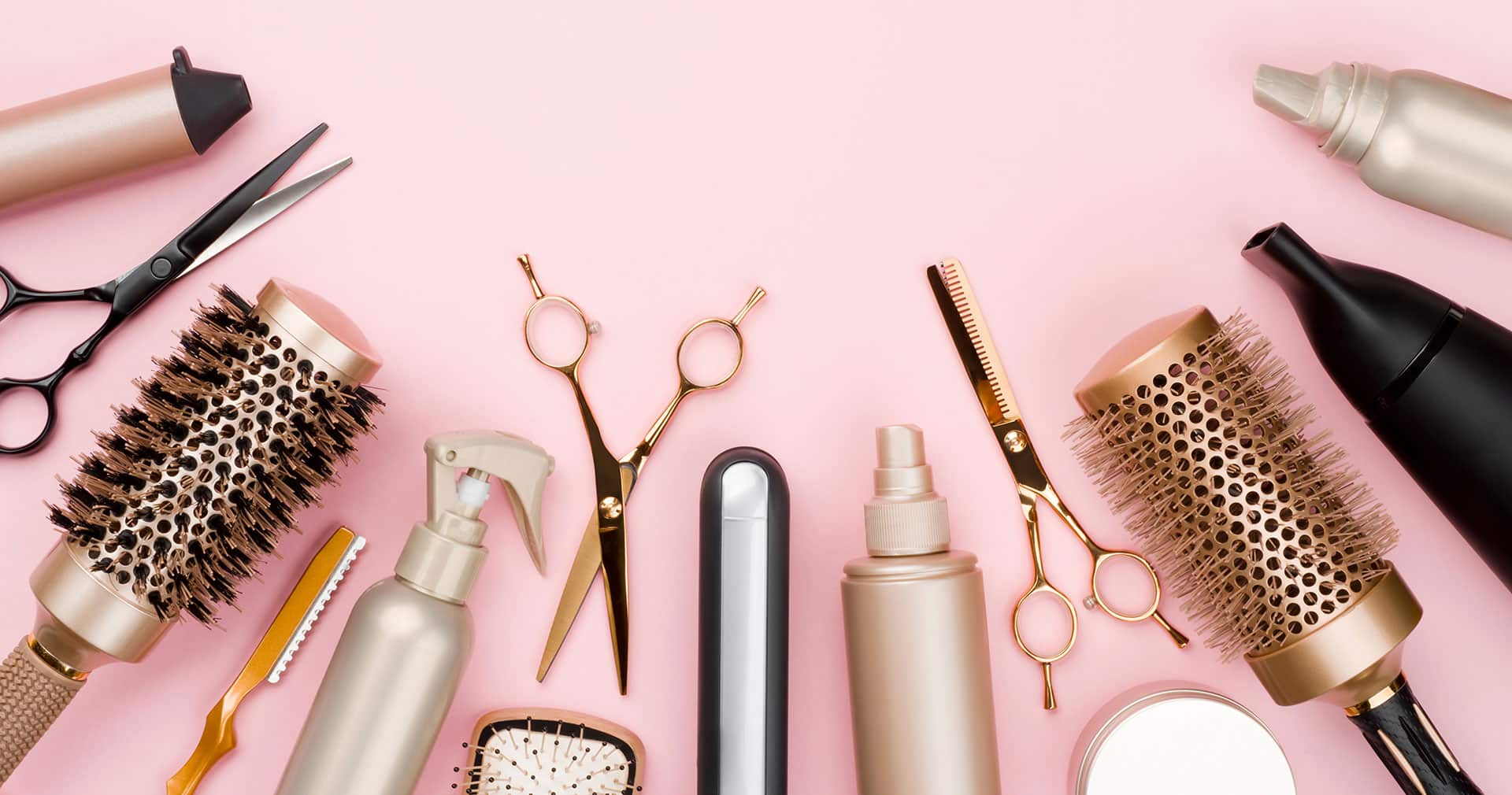
Hair Salon Equipment List: Tools & Supplies for Stylists

Why Salon Staff Training Is So Important
Sign-up for our newsletter, related posts.
Stepping foot in your salon is the start of a new adventure for every client. But nailing that first impression takes more than just skill
Table of Contents Bonus Gift Cards Add-On Savings Special Packages and Bundles Sweepstakes and Giveaways Freebie Swag Bags Best Practices Setup Gift Card Promotion with
As a hair stylist, you’ve got that natural sense of fashion. You’re up on the latest trends and know how to make your clients look
Staff training is key to boosting customer numbers and your bank account if you own or manage a salon. A fully trained salon staff offers
Let's Connect
We’d love to learn more about your business! Give us 20 minutes and we’ll show you how SalonBiz can help you crush your goals.
- 3601 Walnut St. Unit 400 Denver, CO 80205
- 1.888.809.2802
- [email protected]
- Hardware Requirements
- IP Update Request
- Privacy Policy
- Terms of Use
- Patron Terms

Salon Business Plan Template & Guide
Written by Dave Lavinsky

Salon Business Plan?
Over the past 20+ years, we have helped over 10,000 entrepreneurs and business owners create business plans to start and grow their salons. On this page, we will first give you some background information with regards to the importance of business planning. We will then go through a salon business plan template step-by-step so you can create your plan today.
Our salon business plan template works for all types of salons, including:
- Hair or Beauty Salons: which most commonly include hair-cutting, coloring and styling hair and other beauty services
- Nail Salons: which typically include nail treatments, manicures and pedicures
- Hair Removal Salons: commonly include waxing and other forms of hair removal
- Skin Care Salons: commonly include facials and other skin care services
- Tanning Salons: include tanning services
- Day Spa Salons: often include massages, aromatherapy and other services
- Combination Salons: include services from more than one of the above salon types
This being said, we also do have specific pages for information on our hair salon business plan , nail salon business plan , and beauty salon business plan .
Download our Ultimate Salon Business Plan Template here >
What Is a Salon Business Plan?
A business plan provides a snapshot of your salon as it stands today, and lays out your growth plan for the next five years. It explains your business’ goals and your strategy for reaching them. It also includes market research to support your plans.
Why You Need a Salon Business Plan
If you’re looking to start a salon or grow your existing salon you need a business plan. A salon business plan will help you raise funding, if needed, and plan out the growth of your salon in order to improve your chances of achieving success. Your salon business plan is a living document that should be updated annually as your company grows and changes.
Source of Funding for Salons
With regards to funding, the main sources of funding for a salon are bank loans and angel investors. With regards to bank loans, banks will want to review your business plan and gain confidence that you will be able to repay your loan and interest. To acquire this confidence, the loan officer will not only want to confirm that your financials are reasonable. But they will want to see a professional plan. Such a plan will give them the confidence that you can successfully and professionally operate a salon business.
The second most common form of funding for a salon is angel investors. Angel investors are wealthy individuals who will write you a check. They will either take equity in return for their funding, or, like a bank, they will give you a loan. Venture capitalists will not fund a salon. They might consider funding a chain of salons, but never an individual location. This is because most venture capitalists are looking for millions of dollars in return when they make an investment, and an individual location could never achieve such results.
Finish Your Business Plan Today!
Salon business plan template.
Your salon business plan should include 10 sections as follows:
Executive Summary
Your executive summary provides an introduction to your business plan, but it is normally the last section you write because it provides a summary of each key section of your plan.
The goal of your Executive Summary is to quickly engage the reader. Explain to them the type of salon you are operating and the status; for example, are you a startup, do you have a beauty salon with existing customers and revenues that you would like to grow, or are you operating a chain of salons.
Next, provide an overview of each of the subsequent sections of your plan. For example, give a brief overview of the salon industry. Discuss the type of salon you are operating. Detail your direct competitors. Give an overview of your target customers. Provide a snapshot of your salon’s marketing plan. Identify your management team. And offer an overview of your financial plan.
Company Analysis
In your company analysis, you will detail the type of salon you are operating.
For example, you might operate one of the following types:
- Beauty Salon
- Hair Removal Salon
- Skin Care Salon
- Tanning Salon
- Combination of the above types
In addition to explaining the type of salon you operate, the Company Analysis section of your salon business plan needs to provide background on your business.
Include answers to question such as:
- When and why did you start your salon business?
- What milestones have you achieved to date? Milestones could include sales goals you’ve reached, new store openings, etc.
- Your legal structure. Are you incorporated as an S-Corp? An LLC? A sole proprietorship? Explain your legal structure here.
Industry Analysis
In your industry analysis, you need to provide an overview of the salon business.
While this may seem unnecessary, it serves multiple purposes.
First, researching the salon industry educates you. It helps you understand the market in which you are operating.
Secondly, market research can improve your strategy particularly if your research identifies market trends. For example, if there was a trend towards new hair services, nail services, spa services or beauty services, it would be helpful to ensure your plan included offering such services.
The third reason for market research is to prove to readers that you are an expert in your industry. By conducting the salon industry research and presenting it in your plan, you achieve just that.
The following questions should be answered in the industry analysis section of your salon business plan:
- How big is the beauty salon market and/or hair salon industry (in dollars)?
- Is the market declining or increasing?
- Who are the key competitors in the market?
- Who are the key suppliers in the market?
- What trends are affecting the industry?
- What is the industry’s growth forecast over the next 5 – 10 years?
- What is the relevant market size? That is, how big is the potential market for your salon. You can extrapolate such as figure by assessing the size of the market in the entire country and then applying that figure to your local population.
Customer Analysis
The customer analysis section of your salon plan must detail the customers you serve and/or expect to serve.
The following are examples of customer segments: college students, sports enthusiasts, soccer moms, techies, teens, baby boomers, etc.
As you can imagine, the customer segment(s) you choose will have a great impact on the type of salon you operate. Clearly baby boomers would want a different atmosphere, pricing and product options, and would respond to different marketing promotions than teens.
Try to break out your target customers in terms of their demographic and psychographic profiles. With regards to demographics, include a discussion of the ages, genders, locations and income levels of the customers you seek to serve. Because most salons primarily serve customers living in their same city or town, such demographic information is easy to find on government websites.
Psychographic profiles explain the wants and needs of your target customers. The more you can understand and define these needs, the better you will do in attracting and retaining your customers.
With Growthink’s Ultimate Salon Business Plan Template you can finish your plan in just 8 hours or less!
Competitive Analysis
Your competitive analysis should identify your indirect and direct competitors and then focus on the latter.
Direct competitors are other salons.
Indirect competitors are other options that customers have to purchase from you that aren’t direct competitors. This includes products they can purchase from supermarkets and other retailers both offline and online. You need to mention such competition to show you understand that not everyone in your target market frequents a salon on a regular basis or at all.
With regards to direct competition, you want to detail the other salons with which you compete. Most likely, your direct competitors will be salons located close to your location.
For each such competitor, provide an overview of their businesses and document their strengths and weaknesses. Unless you once worked at your competitors’ businesses, it will be impossible to know everything about them. But you should be able to find out key things about them such as:
- What types of customers do they serve?
- What services do they offer?
- What products do they offer?
- What is their pricing (premium, low, etc.)?
- What are they good at?
- What are their weaknesses?
With regards to the last two questions, think about your answers from the customers’ perspective. And don’t be afraid to stand outside your competitors’ locations and ask customers as they leave what they like most and least about them.
The final part of your competitive analysis section is to document your areas of competitive advantage. For example:
- Will you provide superior salon services?
- Will you provide superior salon products?
- Will you provide salon services that your competitors don’t offer?
- Will you make it easier or faster for customers to acquire your products?
- Will you provide better customer service?
- Will you offer better pricing?
Think about ways you will outperform your competition and document them in this section of your plan.
Marketing Plan
Traditionally, a marketing plan includes the four P’s: Product, Price, Place, and Promotion. For a salon business plan, your marketing plan should include the following:
Product : in the product section you should reiterate the type of salon that you documented in your Company Analysis. Then, detail the specific services you will be offering.
Price : Document the prices you will offer and how they compare to your competitors. Essentially in the product and price sub-sections of your marketing plan, you are presenting the menu items you offer and their prices.
Place : Place refers to the location of your salon. Document your location and mention how the location will impact whether you achieve success. For example, is your beauty salon located next to a heavily populated office building, or gym, etc. Discuss how your location might provide a steady stream of customers.
Choosing a location for your salon is an extremely important decision. With the right location, the salon will at least launch on the right foot. With the wrong location, customers may never arrive in the first place. Consider the following two factors with regards to your location:
1. Proximity to Customer Base
To decide on a good location from a customer perspective, you must first know who your target customers are (stay-at-home moms, working women, teens, families) as discussed above. Once you’re clear on this, you can begin scouting locations. Being close to your customer base could mean being close to their homes, but could also mean being near their workplaces or en route between the two. Being close in distance is important, but being accessible (e.g., adequate parking) is even more important.
2. Landlord
Hopefully you’ll be in your location for many years. That means that you will be forming a long-term relationship, even a partnership, with your landlord. The landlord should be invested in the success of your business and understand that what is good for your salon is also good for them. During initial discussions with landlords, look out if you sense that they are focused solely on rules, restrictions and regulations, rather on what you want to do. If the landlord seems intent on starting an antagonistic relationship, think twice before signing the lease. When you choose your location, you are choosing a landlord so make sure you’ll be able to get along with them and have the leeway you need to run a successful salon.
Promotions : the final part of your salon marketing plan is the promotions section. Here you will document how you will drive customers to your location(s). The following are some promotional methods you might consider:
- Making your salon’s front store extra appealing to attract passing customers
- Developing and marketing your website
- Social media marketing (advertising and organic posts)
- Advertising in local papers and magazines
- Reaching out to local bloggers and websites
- Partnerships with local organizations
- Local radio advertising
- Develop marketing materials
Also think about your salon’s Unique Selling Proposition (USP), which should answer why customers should choose you over other salons. Make sure your USP is reflected in your marketing.
Here are some additional marketing tips if you are launching a new salon:
Promote the Opening of Your Salon
To be sure of a well-attended launch event, start promoting early, with attractive signage outside your salon. This should be geared towards your target demographic – women for most salons. Setting up an employee on the street outside or nearby to hand out flyers in the days leading up to and during the opening event can increase visibility, especially if this is an uncommon occurrence in your neighborhood. The point is to stand out and to reach a large portion of your intended customer market with the message that your opening event will be something they don’t want to miss.
Plan a Great Spa or Salon Deal to Increase Profits
When opening, develop a clear deal or incentive for customers to attend and to try your services during the opening day, week, or month. Rather than offering discounts on different products, freebies, two-for-ones and other offers, try to find one nice offer and promote it heavily so that it is memorable both to those who hear about it beforehand and to those who take advantage of it. For example, a free pedicure with purchase of a manicure if you are a nail salon. The offer does not have to break the bank – it could be a small free gift with any service of $50 or more.
Plan for Smooth Salon Operations
To show off your salon at its best, having a pristine and spotless store is a minimal requirement. The operations have to be smooth as clockwork on opening day, especially if appointments and walk-ins make it a very busy first day or week. Customers who use your services during this time can become ambassadors to your customer target group for you, speaking of how wonderful the experience was, or they can spread the word about how they waited forever without hearing what was happening, how salon staff were sloppy or rude, and how they would never return. You need the early adopters on your side, so make sure the human, computer, and mechanical systems are all ready to work perfectly from day one and that you have contingency plans for unforeseen problems.
Operations Plan
While the earlier sections of your salon business plan explained your goals, your operations plan describes how you will meet them. Your operations plan should have two distinct sections as follows.
Everyday short-term processes include all of the tasks involved in running your salon such as serving customers, procuring supplies, salon equipment, keeping the salon clean, etc.
Long-term goals are the milestones you hope to achieve. These could include the dates when you expect to serve your 1,000th customer, or when you hope to reach $X in sales. It could also be when you expect to hire your Xth employee or launch a new location.
Management Team
To demonstrate your salon’s ability to succeed as a business, a strong management team is essential. Highlight your key players’ backgrounds, emphasizing those skills and experiences that prove their ability to grow a company.
Ideally you and/or your team members have direct experience in the salon business. If so, highlight this experience and expertise. But also highlight any experience that you think will help your business succeed.
If your team is lacking, consider assembling an advisory board. An advisory board would include 2 to 8 individuals who would act like mentors to your business. They would help answer questions and provide strategic guidance. If needed, look for advisory board members with experience in salons and/or successfully running retail and small businesses.
Financial Plan
Your financial plan should include your 5-year financial statement broken out both monthly or quarterly for the first year and then annually. Your financial statements include your income statement, balance sheet and cash flow statements. This section of plan should also include startup costs and whether or not you are seeking funding.
Income Statement : an income statement is more commonly called a Profit and Loss statement or P&L. It shows your revenues and then subtracts your costs to show whether you turned a profit or not.
In developing your income statement, you need to devise assumptions. For example, will you serve 20 customers per day or 50? Will your average price point be $50 or $100? And will sales grow by 2% or 10% per year? As you can imagine, your choice of assumptions will greatly impact the financial forecasts for your business. As much as possible, conduct research to try to root your assumptions in reality.
Balance Sheets : While balance sheets include much information, to simplify them to the key items you need to know about, balance sheets show your assets and liabilities. For instance, if you spend $100,000 on building out your salon, that will not give you immediate profits. Rather it is an asset that will hopefully help you generate profits for years to come. Likewise, if a bank writes you a check for $100.000, you don’t need to pay it back immediately. Rather, that is a liability you will pay back over time.
Cash Flow Statement : Your cash flow statement will help determine how much money you need to start or grow your business, and make sure you never run out of money. What most entrepreneurs and business owners don’t realize is that you can turn a profit but run out of money and go bankrupt. For example, let’s say a company approached you with a massive $100,000 salon contract to provide salon services to their employees. Let’s assume the contract would cost you $50,000 to fulfill. Well, in most cases, you would have to pay that $50,000 now for supplies, employee salaries, etc. But let’s say the company didn’t pay you for 180 days. During that 180 day period, you could run out of money.
In developing your Income Statement and Balance Sheets be sure to include several of the key costs needed in starting or growing a salon:
- Location build-out including design fees, construction, etc.
- Cost of equipment like chairs, washing equipment, etc.
- Payroll or salaries paid to staff
- Business insurance
- Licenses and permits
- Legal expenses
Attach your full financial projections in the appendix of your plan along with any supporting documents that make your plan more compelling. For example, you might include your salon’s design blueprint or location lease.
Summary & Keys to Salon Success
Putting together a business plan for your salon is a worthwhile endeavor. If you follow the salon business plan template above, by the time you are done, you will truly be an expert. You will really understand the salon business, your competition and your customers. You will have developed a marketing plan and will really understand what it takes to launch and grow a successful beauty salon or hair salon.
Finally, in addition to completing your salon business plan template, be sure to pay special attention to the following factors that often define success for salon businesses:
- Make sure all of your clients are thrilled with your services
- Keep your salon clean at all times
- Provide excellent communications with current and prospective clients
- Embrace new technology, particularly social media to engage your clients and get them to return to your salon
- Focus on growing revenues, but also on profits, by keeping a close eye on costs
- Hire the right team, train them well and treat them well so their performance is strong and they are loyal to your business
Download Our Salon Business Plan PDF
You can download our salon business plan PDF here . This is a business plan template you can use in PDF format.
Salon Business Plan FAQs
What is the easiest way to complete my salon business plan.
Growthink's Ultimate Salon Business Plan Template allows you to quickly and easily complete your Salon Business Plan.
Where Can I Download a Free Salon Business Plan PDF?
You can download our beauty salon business plan sample pdf here. Our salon business plan PDF template is a business plan template you can use in PDF format.

Features overview
All Features
Keep your business running 24/7 with Trafft features and integrations
Features and Plans Comparison
Check the detailed comparison of Trafft plans
Reserve with Google
Accept bookings via Google Search and Maps
WordPress Plugin
Add Trafft booking form to any page of your WordPress website
Business and client management
Business Dashboard
Gain a comprehensive view of your business performance
Business Processes Automation
Automate every single aspect of your business with one tool
Employee Management
Organize everything related to employees
Customer Management
Gain more returning customers
Self-Serve Customer Booking
Let your customers book, cancel or reschedule appointments 24/7
Booking and Scheduling System
Booking Core
Adapt Trafft completely to your specific booking needs
Smart Calendar and Scheduling
Have a clear view of all your appointments in one calendar
Flexible Scheduling
Create your schedules with complete flexibility
Payment Automation
Payments Processing
Get paid for your services easily, safely and on time
Invoicing and Tax Management
Manage invoices, taxes and payments automatically
Marketing and Sales
No-code Booking Page Creation
Promote your brand online with a customizable booking page
Loyalty Boost
Automate and personalize the communication with customers
Lead Capture
Turn your leads into customers with effective marketing
Integrations
Use Trafft's integrations to connect Trafft with other tools
Professional Services
Government & Administration
Reduce waiting time in queues and enhance staff productivity
Home services
Make your business available for booking 24/7
Cleaning services
Create your team’s schedules with complete flexibility
Automotive services
Manage your entire automotive business with scheduling software
Personal Services
Get the most out of your service business with effective organization
Beauty & Hair
Make your salon business stand out with effective management tool
Keep your barbershop well organized
Healthcare & Wellness
Automate repetitive tasks and have more time to focus on your patients
Dental clinics
Build a successful and modern dental practice
Education & Coaching
Coaching & Consulting
Give your coaching or consulting business a professional look
Education & Teaching
Automate the interaction with your students
Fitness & Sports
Turn your occasional visitors into members with the best experience
White Label for Agencies
Offer your clients a modern and intuitive scheduling platform, white-labeled as your product
Trafft Blog
Check out the latest information on industry trends and get advice for running a service business online
Guides and Documentation
Get a detailed explanation of how every Trafft feature and integration work
Read about Trafft’s story, mission and values we share
Affiliate and Partners
Join us on our journey of helping service businesses thrive through automation
Partner with Trafft and expand your market reach
Investor Relations
Reach out to us if you are interested in investing in Trafft
Learn more about why you should choose Trafft
Feel free to reach out if you have any questions or suggestions
WordPress plugin
Creating a Successful Salon Business Plan: A Step-by-Step Guide
- January 23, 2024
- For Salon Owners

If you plan to open a salon, besides setting the objectives, you’ll need to know how you’re going to achieve them. Or, in other words, you need a sound salon business plan.
Creating a salon business plan can help you identify specific goals and strategies, as well as provide guidance on how you can reach them and see your business thrive. Knowing how to craft your plan is vital, as it can easily make or break your salon business.
This article will walk you through how to create a salon business plan step-by-step.
Why is a Salon Business Plan so Important?
What is a salon business plan.
A salon business plan is a formal, written statement of the goals you want to set for your business. It explains why you want to set those goals and what your plan is for reaching them. A salon business plan might also include information about the individuals or teams working toward those goals with you.
A good salon business plan gives an overview of where your business is at now and explains where you want to be in the future. It also includes marketing information and research that impact your business plan in general. In fact, think of your salon business plan as a road map where you show where you are now and explain where you’re headed and what it will take to get there.
As you build your salon business plan, it’s important to include information about the process of opening your salon. This information is important because, right from the get-go, you lay the groundwork for success. This groundwork then helps you run and grow your salon business .
Why is a business plan essential for the success of your salon?
A salon business plan is an essential tool for the growth and success of any salon. It is important as it helps you to jot down your ideas and thoughts, arrange them in an organized manner, and develop an overall plan to implement them.
Writing a salon business plan also enables you to identify potential difficulties and challenges that may arise in the future. Once you’ve identified them, you can create a strategy to address them.
Having a business plan is just one of the essential steps to opening your very own salon – to see what other boxes need to be checked, download our Opening a Salon checklist PDF :
The Ultimate Checklist You Need to Open Your Salon
Get Trafft’s FREE & PRINTABLE step-by-step opening a beauty salon checklist every salon owner needs.
Bonus: Discover 5 essential steps to building a successful beauty salon


Benefits of having a sound salon business plan
A well-crafted salon business plan comes with many benefits:
- A Greater Success Rate : A good business plan allows you to mitigate risks, make better-informed decisions, and improve your chances of running a successful salon.
- Better Financial Management : A well-written salon business plan includes your budget, financial projections, and expense management. This helps you keep tabs on your salon’s financial health, which leads to financially sound decisions.
- Improved Marketing Strategies : A sound business plan requires you to conduct market research and develop marketing strategies. Then you can identify your target market, predict customer preferences, and adjust your marketing efforts to be more effective.
- Increased Operational Efficiency : A salon business plan ensures that you implement efficient operational processes. This allows your salon to keep running smoothly and leads to increased customer satisfaction.
How to Write a Salon Business Plan in Just 12 Steps
- Write an executive summary
- Create effective mission and vision statements
- Include a salon business description
- Analyze the market and identify your target audience
- Check what your competitors are up to
- Identify products and services you wish to offer
- Craft a sound financial plan
- Tackle management and organization
- Plan your everyday operations
- Think about your marketing strategy
- Think about sales
- Don’t forget to include risks
1. Write an Executive Summary
An executive summary explains what your salon is like and why it is successful. In most cases, a potential investor would go straight to this section to get an idea of what the business is like. If the executive summary isn’t interesting or compelling, they won’t read any further. That makes it an essential section and the first step when writing your salon business plan.
The executive summary should include information that is relevant to stockholders or investors. Include details about your target market, business objectives, and financial projections. Don’t forget to add information about your products and service menu, as well as your vision and mission. The main idea is to let the reader know what’s up, grab their attention, and make them want to keep reading.
Key components
An executive summary of every salon business plan should include the following information:
Business overview : Introduce the reader to your salon. Include information like the name and location, and a brief description of your core values, vision, and mission.
Market analysis : Provide a summary of your research on your target market. Include details about the target market’s trends and demographics. Then highlight gaps or opportunities in the market that you plan to capitalize on.
Your business objectives : Clearly identify your business goals and state what you want your salon to achieve. This might include details like expansion plans, revenue targets, or customer acquisition goals. In this section, you can include any goals that will affect your salon’s growth and success .
Products and Service menu : Give a brief overview of what your salon offers. Make sure your unique features and competitive advantages stand out. Explain what your salon is doing to meet the needs of the target market.
Marketing strategies : Explain your marketing strategy. This includes information about advertising, branding, social media, and so on. If you have any original ideas for how to make your salon stand out from the competition, make sure to highlight them.
Your financial projections : Provide a detailed financial plan overview. Include any information about profit targets, expenses budget, and revenue forecasts. Highlight any achievements or milestones you have reached that prove the financial viability of your salon.
Any funding requirements : Clearly explain the funding requirements for your salon. Explain how much funding you need, how you will use the funds and any other potential sources of funds you have.
2. Create Effective Mission and Vision Statements

Image by pch.vector on Freepik
A mission statement is a short explanation of why you created your salon, what your goal is, and how you want to achieve it. Your mission statement is an important part of your salon business plan, so it should be the first thing you see on the page. It’s a good idea to put it at the top of the page where you and others can see it and be reminded of your purpose.
The mission statement gives you the chance to express your purpose and intention. It not only explains why you started the salon, but it also explains what you have to offer. It shows what sets you apart from the competitor salons and captures the spirit with which you run your salon.
In just a few words, your mission statement can determine what drives your business.
Defining your purpose and aspirations
Part of the purpose of a mission statement is to define your purpose and what you offer. Your purpose is the reason you exist and what you have to offer potential customers. To get an idea of what your mission statement should include, ask yourself “Why does my salon exist?”
A vision statement serves a similar purpose. It explains where you want to take your business and what you hope to achieve. It defines your goals and the future impact you want to have. To identify the key points that will go into your vision statement, ask yourself “Where do I see my salon in the future?”
Putting your purpose and your long-term goals in writing plays an important role in having a successful business plan.
How to craft mission and vision statements
Here are a few examples of things you can consider when you are writing your mission statement and your vision statement. This will help you come up with ideas that reflect your identity and direction as a salon.
- Have a brainstorming session with your team. Ask them “What do you think makes this salon unique? What do you love about working here? What do you personally want to achieve?”
- Identify core values. What specific values do you want to uphold in everything you do? Some examples of core values are: creativity, integrity, excellence, diversity, and
- Put your mission statement in writing. Use your core values as a starting point. Then write a short, simple sentence that sums up your salon’s purpose and what you offer to clients.
- Write your vision statement. Write a short, inspiring sentence that describes your long-term goals for the salon and what you want to achieve.
- Review and refine. Once you have your mission and vision statements written down, take some time to review them. Make sure your statements are both clear and concise, as well as compelling.
In case you need a bit of help, take a look at some brilliant salon mission statement examples sure to inspire you.
Also, writing an effective slogan will only underline the message you wish to send, so make sure you have one ready.
3. Include a Salon Business Description
Company description.
A company description is a quick overview of your business that explains the core values of your company. This part of your salon business plan is all about giving a quick and simple rundown to the readers. It’s meant to give them a general idea of what your business is all about.
Outlining the details
Your salon business description provides all the basic details about your salon. You should include the name of your salon, the location, and your contact information. Also, include the details about the legal structure of your salon. This information is the foundation of the rest of your business description. Thus, it’s important that the information is accurate and up to date.
Company history and brand story
In this section, you should provide some information about the background and history of your salon. When was your business founded? What led to you starting your business? Whatever your story is, this section is your chance to tell it.
Describe what you offer and your USP
This section details what your clients can expect to find at your salon. You can use this section to provide details about new beauty products or services you are offering. If you are working on your own line of products, this is also a good place to mention it and provide an estimated timeline for when it will be available.
Your salon’s USP (unique selling proposition) is what makes your salon stand out from the rest of the market. It is very important to highlight your USP in your business description.
4. Analyze the Market and Identify Your Target Audience
The market analysis shows that you’ve put some serious thought into your target audience. You’ve also done some research to find out what the competitors are missing out on. What’s more, it shows that you really know your area and have made some changes to your approach to fit in.
When you identify and analyze your potential clients, you are better able to adjust your marketing strategy to catch their eye.
Conducting market research
Market research means collecting data about the needs, preferences, and behavior of potential clients. Then you analyze this data. Market research helps you identify who your target market is and what their expectations and needs are. Based on these findings, you can create a marketing strategy that is appealing to that audience in particular.
Conducting market research also helps you identify who your competition is. Knowing this helps you get a good idea of reasonable pricing and ideal locations. Factoring this information in helps you gain and retain clients.
Here are some ideas on how you can make the entire process more interactive and fun (both for you and the participants):
Salon pop-up surveys
Set up a pop-up booth or station near popular local spots and events. Engage with passersby, offering quick surveys with a fun incentive like discount coupons for your salon. This allows you to gather diverse opinions and attract potential customers .
Instagram polls and stories
Leverage the interactive features of social media. Use Instagram polls and stories to ask your followers about their favorite salon experiences, desired services, or beauty trends. Encourage them to share their thoughts and tag friends for a chance to win a free service.
Salon open house events
Host an open house event at your salon. Invite the local community to explore your space, meet your staff, and participate in live demonstrations or mini-makeovers. Use the opportunity to collect feedback and preferences directly from attendees.
Collaborative mood boards
Create collaborative mood boards or Pinterest boards where clients and potential clients can contribute their favorite hairstyles, colors, and beauty inspirations. This not only gathers valuable insights but also fosters a sense of community and involvement.
Beauty trend workshops
Organize workshops on the latest beauty trends. Invite participants to share their thoughts on emerging styles and treatments. This not only serves as a research platform but also positions your salon as a trendsetter in the community.
Community surveys with prizes
Distribute physical or digital surveys within the local community, emphasizing the importance of their opinions. Include a prize draw or a special discount for survey participants, encouraging more people to contribute.
Interactive social media challenges
Create engaging challenges on social media platforms, encouraging followers to share their favorite salon experiences or dream makeover ideas. Use a unique hashtag to track responses and offer prizes for the most creative entries.
Beauty polls and quizzes
Develop entertaining online polls or quizzes related to beauty and salon preferences. Share these on your website and social media to capture audience insights while providing a fun and interactive experience.
By infusing creativity and engagement into your market research efforts, you not only gather valuable information but also strengthen the connection between your salon and the community. The more interactive and enjoyable the process, the more likely you are to receive enthusiastic and authentic responses from your audience.
Identifying behaviors, demographics, and preferences
Once you have information on your target market you can use it to better understand them. Here are a few things to look at:
The behavior of your target market. This refers to the way clients make purchasing decisions, their brand loyalties, and other similar behaviors. In general, behaviors can include anything that affects a client’s decision-making process.
Demographics refer to the characteristics of your potential clients.
Geographic location, educational background, and income can all impact the way clients respond to your marketing strategy.
Even the age and gender of the people you want to draw in can affect which strategies you use. Understanding this will help you create a marketing plan that resonates with the clientele you want to attract.
Then you have to factor in the preferences of your target market. What do they like and dislike? What kinds of ambiance are they drawn to? Which salon services are most popular with this group? What are their thoughts on pricing? What do they look for in customer service? All these factors play their part in whether or not a potential customer chooses your salon.
Client analysis
This part of your salon business plan is all about who your potential clients are. Depending on where your salon is, you might get certain types of people coming in. Or, it might be a mix of different types. You need to include details about who your market is made up of and what they’re like.
Here are a few things involved in conducting a client analysis for your salon:
- Define the scope and the objective of the analysis. Include information about the services and products, the time frame, and the area your customers are coming from.
- Collect data from a variety of sources and analyze. You can use surveys, online reviews, industry reports, interviews, and social media, as well as other sources.
- Identify specific customer groups. This includes demographics, needs, and behaviors.
- Create a profile for each customer group. Include descriptions of preferences, characteristics, expectations, and motivations.
- Evaluate the salon’s current performance. How are you doing with customer retention, satisfaction, and loyalty? How much is your salon profiting?
- Identify specific areas where you can improve customer relationships.
5. Check What Your Competitors Are Up To
A competitive analysis explains your plan for your salon to dominate the market. It is important for your competitive analysis to give a brief explanation of the existing competitors. This can include direct competition, like another salon, or indirect competition. The indirect competition includes any other option for clients to receive the products or services you offer. In this section of your salon business plan, you can bring out the strengths and weaknesses of your competition and explain how your target market views them.
Knowing your competition will help you determine what your own advantages are. Then you can capitalize on those advantages to attract and keep more customers. Once you can pinpoint your unique strengths, you are better equipped to carve out your own place in the market. It will give you a starting point to work from to identify a new way to attract customers. It may also help you find something unique to offer that no one else in the area is offering.
Conducting a SWOT analysis
To be able to succeed and stand out from the competition, it is helpful to carry out a SWOT analysis . SWOT is an acronym for strengths, weaknesses, opportunities, and threats. This analysis will help you diagnose the factors that play a role in the potential and performance of your competition.
What are the strengths of your competitors? Maybe a competing salon has a good reputation and a strong brand. Perhaps they offer a wide range of services or have a skillful team. They might have a good relationship with their suppliers, offer a clean and welcoming atmosphere, or have an optimal location.
What are their weaknesses? Perhaps they offer a limited number of services or have staff that lacks experience. They might be struggling with high overhead costs or have a difficult location. Or they may be on the losing end of high competition and/or struggle to maintain customer loyalty.
Opportunities for a salon include expansion opportunities or new services and products. Other opportunities include increased online presence, partnering opportunities, or new technology and trends.
What is a threat to a salon? Economic recessions, loss of customers to the competition, and negative reviews all threaten the success of a salon. Other threats include supply chain disruptions, legal problems, and environmental and health risks.
6. Identify Products and Services You Wish to Offer
This part of your salon business plan lays out all the different services that your salon will offer its customers. You can expect a wide range of services, from haircuts, styling, coloring, treatments, manicures, pedicures, facials, and many more. Each service is described in detail, including the techniques used, expected results, and pricing structure. We’ve also got a great selection of salon products that you can buy, like hair care items, skincare products, and beauty accessories.
By providing a comprehensive overview of the salon’s products and services, we’re showing that we’re committed to meeting all our customers’ needs and preferences. We want to make sure everyone feels welcome and satisfied with their experience at our salon. This sets the stage for a successful and thriving salon business.
7. Craft a Sound Financial Plan

Image by vectorjuice on Freepik
Here is where you provide details about the financial history, budget, and projections for your salon. Any potential investors or lenders will be especially interested in this section of your salon business plan.
When writing this section, you should include your financial plan for your salon for the next 3-5 years, as well as your financial history going back 3-5 years. If the salon has income, include financial statements. You should also include potential funding sources and your plan for keeping your salon running.
A good budget is the foundation for any effective financial plan. A budget allows you to distribute resources like time and funds effectively. A good budget also allows you to make better decisions about saving and spending and set goals for your finances.
Start by identifying all the sources of income for your salon. This includes product sales, service fees, and so on. Then identify all the expenses your salon has, like rent, salaries, supplies, and other operational costs. You could make a category for expenses that are always the same, like rent, and another for expenses that vary from month to month, like supplies. This might help you to see patterns and identify areas where you could cut back on some costs.
Once you have identified all your income and expenses, then you can set goals. From time to time, check your progress against your budget to see how you are doing and if you can make any further adjustments.
Income streams
Adding income streams is a good way to increase revenue. The following are a few options you could explore:
- Subscriptions : Charge fees for a set period of time instead of per transaction.
- Advertising : Promote certain brands in-store and online.
- Freemium plans : Certain services are free and “premium” services cost extra.
- Third-party licensing : Give third parties the right to use or sell your patented products.
- Renting or Leasing : Rent out assets (for example, real estate or products) for a price.
As you create your financial projections, factor in the demand in the market and the volume of customers. You should also include your pricing strategy for the products and services you offer. It would be helpful to go back and review your sales history. Then you can isolate specific trends. This will help you make more sound financial decisions moving forward. It would also be helpful to you to do some research on the current market.
Alternative funding options
There are a variety of options when it comes to alternative funding sources for your salon. Each option has pros and cons. Some options include loans, grants, crowdfunding, or partnerships.
Loans may offer somewhat low interest rates. However, it’s important to find out what they require for collateral or how strict the repayment terms are.
Grants can offer funds that you don’t have to repay, but they might have strict eligibility requirements and limits on how you can use the funds.
Crowdfunding can get you funds from a pool of investors, but it might mean sharing control or ownership of your salon.
Partnerships can get you access to extra capital and more expertise. On the downside, partnerships can mean profit-sharing. You may also have to consult with your partners before you make decisions.
Expense management
If you want your salon business plan to have success, it is vital that you manage your expenses carefully. To maximize your earnings, you have to optimize your expenses and control the costs your salon faces. This is the only way to make sure that your salon remains financially stable.
Regularly review your expenses and identify ways to cut costs without sacrificing quality. Be on the lookout for chances to negotiate better deals on supplies and cut out unnecessary expenses. For example, could you choose equipment that is more energy efficient? Is there a way you could maximize the lifespan of the products you use and cut back on supply costs?
Hiring freelancers or contractors
Hiring a contractor or freelancer can have a lot of benefits. These independent professionals can provide you with the expertise you need to do a specific project or task. Some of the benefits they offer include:
- Saving on Costs: Hiring contractors and freelancers can save you money on payroll taxes, training, benefits, and more. You pay for the work they do and depending on your needs you can adjust your budget.
- Greater flexibility: You hire contractors and freelancers only as you need them and for as long as you need. You can adjust the scale of your team depending on the demand of the project and their availability.
- Expertise: Freelancers and contractors bring in fresh ideas and perspectives. Their knowledge of the industry is also an asset to your salon business. They can also carry out tasks that are beyond your skill set or that require special equipment and tools.
8. Tackle Management and Organization
The management and organization plan is the backbone of your salon business plan. It shows how your salon will operate and reach its goals. This section gives an in-depth look at the salon’s management team, including their qualifications, experience, and roles inside the salon. It also explains how the salon will be structured, how decisions will be made, and how different teams will work together.
By sharing a clear management and organization plan, your business plan shows that the salon has capable people and a well-structured system to make it in the competitive beauty industry.
9. Plan Your Everyday Operations
The salon’s operational plan outlines the day-to-day procedures and practices that drive the smooth functioning of the salon. It covers all the essential operational aspects, from staff scheduling and client management to inventory control and quality assurance.
The plan sets out who’s responsible for what, so everyone works together like a team to give customers the best service. It includes strategies for optimizing appointment bookings , managing walk-ins , and handling peak hours efficiently .
Moreover, the operational plan addresses health and safety protocols, emphasizing the importance of maintaining a clean and hygienic environment for both clients and staff. By adhering to the operational plan, the salon can enhance productivity, elevate the overall customer experience, and create a thriving and well-organized salon environment.
Implementing booking software into your salon’s everyday operations
As a forward-thinking salon owner, integrating booking software into your daily operations isn’t just a tech-savvy move – it’s a strategic investment that brings a myriad of benefits to your business.
Booking software simplifies the appointment process, allowing clients to schedule services seamlessly. With real-time updates, your staff can manage and optimize appointments, reducing the risk of scheduling conficts and ensuring a smooth workflow.
Also, booking software enables you to create and manage staff schedules effortlessly. With automated notifications and reminders, your team stays informed, reducing scheduling conflicts and enhancing overall productivity.
Not to mention that clients appreciate the convenience of booking online, as it allows them to be in charge of everything – they can choose services, select preferred staff members, and book appointments at their convenience.
Revolutionize Your Salon Management with Trafft: A Solution Tailored for Salon Owners
As a salon owner, you’re no stranger to the challenges that come with managing a bustling beauty business.
Managing appointments, handling last-minute rescheduling, dealing with overbooking, creating and managing staff schedules, and struggling to be there for your clients in the middle of the night – these are just some of the common pain points you face as a salon owner.
Enter Trafft ! Tailored with your specific challenges in mind, Trafft is designed to transform your daily chaos into an efficient salon experience.

What do you get from Trafft?
- Say Goodbye to Daily Organizational Chaos : Bring order to the chaos with real-time updates and efficient scheduling. Trafft makes organizing your calendar, keeping track of appointments, and managing staff schedules a breeze.
- Minimize No-Shows : With Trafft’s automated reminders, you can reduce no-shows and make sure that each appointment slot is valuable. You’ll receive timely notifications via email or SMS which will help you cultivate a reliable and engaged customer base.
- Reschedule with Ease : When your clients choose a new time, Trafft will send notifications to both of you. Plus, it’ll confirm the booking and update all your calendars. No need to worry about canceling an appointment – Trafft will do it for you!
- Be Available 24/7: Allow clients to schedule appointments at their convenience. Transform your salon into a 24/7 beauty oasis, breaking free from traditional booking hour constraints.
So, are you ready for a salon management revolution? Embrace Trafft and start your transformation now!
10. Think about your marketing strategy
This is your game plan for your salon to bring in new clients and promote your services. A thorough marketing plan , with plenty of marketing ideas and marketing tools you plan to use, is essential. It allows you to stand out from the competition and reach your target market. It also allows you to create connections with your customers and achieve your marketing goals.
This is the most flexible section of your salon business plan . As your business grows and the market changes, your marketing plan will adapt to it.
Marketing strategies that attract and retain clients
It’s important for salon owners and managers to create strategies for advertising and marketing. This helps to attract new customers and retain existing clients , as well as improve the reputation and visibility of the salon. Here are a few strategies you might try:
- Create a salon website or social media account . There customers can get information about your prices, services, location, and hours. Websites and social media accounts are great ways to showcase your work or advertise special events and promotions.
- Try offering discounts, coupons, referrals, loyalty programs, or gift cards . This will encourage customers to visit the salon more frequently and make them more likely to spread the word to friends and family.
- Participate in local events . Are there any festivals, fairs, charity drives, or fashion shows coming up? These events are a great opportunity for the salon to showcase its skills and services. It also gives you the chance to network with potential customers and partners and generate publicity.
- Look for opportunities to partner with other local businesses like spas, hotels, gyms, or restaurants. You can cross-promote services and offer deals or packages to shared customers.
- Send emails or newsletters to customers about your latest news, tips, beauty trends, and offers.
- Ask for feedback from customers . Then use their responses to improve customer satisfaction and quality of service.
11. Think About Sales
In this section of your salon business plan, you should outline the strategies and tactics that will be employed to drive revenue and achieve your salon’s financial objectives.
This section delves into the target market and defines the salon’s unique selling proposition, emphasizing what sets it apart from competitors. It details the pricing strategy for various services and products, taking into consideration factors such as market demand, competition, and the perceived value of offerings.
The sales plan also identifies promotional activities and marketing campaigns that will be executed to attract new clients and retain existing ones. It includes a timeline for these initiatives, along with a budget allocation for marketing expenses. Furthermore, the section discusses techniques for upselling and cross-selling to maximize the average transaction value per customer.
By laying out a comprehensive sales plan, the business plan showcases the salon’s dedication to achieving financial success and growth through a well-structured and effective sales approach.
12. Don’t Forget to Include Risks
The risk management section of the salon business plan addresses the potential challenges and uncertainties that the salon may encounter during its operations.
This section identifies and assesses various risks, including financial, operational, legal, and industry-specific risks. It outlines the proactive measures that will be implemented to mitigate these risks and ensure business continuity.
Strategies such as obtaining insurance coverage, adhering to strict health and safety protocols, implementing sound financial practices, and conducting regular staff training are discussed to minimize potential liabilities. Additionally, contingency plans are detailed to handle unexpected situations, such as economic downturns or natural disasters.
By carefully analyzing and addressing potential risks, the risk management section demonstrates the salon’s commitment to safeguarding its interests and building resilience, providing potential investors and stakeholders with confidence in the salon’s ability to navigate challenges and succeed in the long run.
So, What’s the Secret to Creating a Successful Salon Business Plan?
Running a successful salon requires more than just a flair for aesthetics; a robust salon business plan is equally essential. This plan is not a one-time document but a dynamic tool that evolves alongside your business. It serves as a roadmap, guiding your financial decisions, attracting funding, and steering your salon toward lasting success.
When writing your salon business plan, don’t forget to include a detailed market analysis, your financial projections, operational plan, services and pricing strategy, marketing, and branding.
Be sure to check in on your plan regularly and see how you’re doing compared to your goals.
Remember, a well-thought-out salon business plan is not just a formality; it’s a dynamic tool that empowers you to make informed decisions, navigate challenges, and seize opportunities for growth. Invest time and effort in crafting a plan that aligns with your vision, and watch your salon flourish.
Looking for More Salon-Related Resources?
If you enjoyed this article about creating a successful salon business plan, you should check out these as well:
- The Best Salon Appointment Booking App On the Market
- How To Manage A Salon Successfully (Salon Manager Tips)
- How To Run A Successful Salon (The Salon Owner Guide)
- How To Get More Clients In A Salon (The Ultimate Guide)
- How Much Do Salon Owners Make? Tips for You to Earn More
- Salon Cancellation Policy Examples and Templates To Use
- The Best Salon Slogans and Mottos to Use for Your Own
- Salon Mission Statement Examples and Tips To Create One
- The Types of Salon Insurance You’ll Need for Your Business
- Salon Social Media Marketing 101
- How to Make a Salon Price Increase Notice without Losing Clients
- The Most Efficient Salon Marketing Ideas You Need To Try
- The Best Salon POS System to Pick From
- Salon Booth Rental Tips and Best Practices to Know
FAQ on Salon Business Plan Essentials
Why do i need a salon business plan.
A salon business plan is essential because it serves as a roadmap, guiding you through the process of starting and growing your business.
It outlines your goals, target market, services, pricing, and marketing strategies, helping you stay on track and make informed decisions.
A well-prepared business plan can also be valuable when seeking financing, as it demonstrates your commitment and expertise to potential investors or lenders.
What should I include in the company description?
In the company description, provide an overview of your salon, including the name, location, and ownership structure.
Explain your salon’s mission, vision, and core values, as well as the unique selling points that set you apart from competitors. This section should also highlight the salon’s atmosphere, target clientele, and the specific services you plan to offer.
What is an example of a salon mission statement?
An example of a salon mission statement could be: “At [Your Salon Name], we are dedicated to delivering exceptional beauty experiences that empower our clients to look and feel their best. Our mission is to create an inviting, inclusive environment where creativity thrives, and our team is committed to providing personalized, high-quality services that enhance natural beauty and boost confidence.”
What is the best business structure for a salon?
The most common business structures for salons are Sole Proprietorship, LLC (Limited Liability Company), or Corporation. Each has its own advantages. Sole Proprietorship is simpler but offers less liability protection. LLC combines liability protection with flexibility. A Corporation provides strong liability protection but involves more complex formalities. Consult with a business advisor to determine the best fit for your salon.
How do I choose the right services for my salon?
Choosing the right services for your salon starts with understanding your target market and their needs.
Research your local area and identify gaps in the market or underserved segments. Consider your own skills and expertise, as well as those of your team, and focus on services that align with your strengths.
Offering a mix of essential and specialized services, such as haircuts, coloring, and unique treatments, can help you stand out and attract a loyal clientele.
How do I set salon pricing?
Setting salon pricing requires balancing the cost of providing services with what customers are willing to pay.
Research competitor pricing in your area and consider factors such as your target market, the quality of your services, and your salon’s atmosphere. You can opt for tiered pricing based on the experience of the stylist or offer service bundles to encourage customers to try additional services.
Be prepared to adjust your pricing as your business grows and evolves.
What’s the best way to market my salon?
Marketing your salon requires a combination of traditional and digital strategies.
Word-of-mouth referrals from satisfied clients can be powerful, so encourage customers to share their experiences with friends and family. Utilize social media to showcase your work, engage with potential clients, and share promotions.
Collaborate with local businesses or participate in community events to raise brand awareness. Don’t forget about email marketing, loyalty programs, marketing tools , and targeted advertising to attract new customers and retain existing ones.
How can I ensure a top-notch customer experience?
Providing an exceptional customer experience is crucial for salon success. Start by hiring skilled, friendly staff who share your vision and commitment to customer satisfaction. Offer ongoing training to ensure your team stays up-to-date on industry trends and techniques.
Also, handle bookings professionally, with the help of salon scheduling software and booking apps .
Create a welcoming, clean, and comfortable salon environment, and be responsive to customer feedback. Consistently delivering high-quality services and personalized attention will help you build a loyal client base.
How do I manage salon inventory and supplies?
Effective inventory management is essential for a successful salon. Implement a system to track product usage and sales, ensuring that you always have adequate supplies on hand without overstocking. Regularly review your inventory levels and adjust your ordering frequency or quantities as needed.
Negotiate with suppliers for the best prices and consider implementing inventory management software to streamline the process.
What legal requirements should I be aware of?
Before opening your salon, familiarize yourself with any legal requirements, such as licenses, permits, and zoning regulations.
You may need a cosmetology license, business license, or specific permits for your location. Additionally, ensure your salon meets local health and safety guidelines and complies with employment laws. Consult with a legal professional if you’re unsure of your obligations.
How do I create financial projections for my salon?
Creating financial projections for your salon involves estimating future revenue, expenses, and cash flow. Start by estimating your income from services and product sales, taking into account factors like pricing, target market, and more.
Outline your anticipated expenses, such as rent, utilities, salaries, marketing, and inventory costs. Create a cash flow statement to ensure you have enough working capital to cover your expenses and support your salon’s growth.
Use your financial projections to set realistic goals and adjust your business plan as needed. Regularly review your financial performance and compare it to your projections, making necessary changes to stay on track and achieve your objectives.
How do I measure the success of my salon business?
Measuring the success of your salon business involves tracking key performance indicators (KPIs) that align with your goals.
Common KPIs for salons include revenue growth, client retention, client acquisition, average ticket value, and employee productivity.
Track these metrics regularly to assess your salon’s performance and identify areas for improvement. Additionally, use customer feedback, online reviews , and testimonials to gauge the overall satisfaction of your clients and the quality of your services.
This information can help you refine your business strategies and ensure your salon’s ongoing success.
- Jovana Smoljanovic Tucakov
Jovana Smoljanovic Tucakov is a Content Marketing and SEO Specialist who uses both words and data to communicate a message and deliver value. With more than 5 years of experience in digital marketing and content production in the IT industry, she loves identifying and solving the readers’ pain points and creating targeted content.
Curious about the human mind and emotions, especially those that drive consumer behavior. Likes fitness, food preparation, board games, reading (both for pleasure and learning), and binge-watching Netflix.
Related Posts
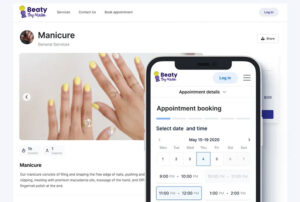
How To Get More Clients In A Salon: The Ultimate Guide

The Best Salon Scheduling Software in 2024
- October 9, 2023
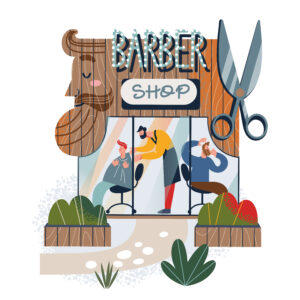
Are Barbershops Profitable? Unveiling the Financial Potential
- September 28, 2023
Small Business Trends
How to start a hair salon business.

If you buy something through our links, we may earn money from our affiliate partners. Learn more .
Hair salons brought in more than $46 billion in revenue in 2018. And the market is still growing, making it a perfect opportunity for beauty-focused entrepreneurs . In fact, the industry as a whole is mainly made up of smaller businesses, rather than huge, nationwide competitors.
How to Start a Hair Salon

If you’re interested in starting your own hair salon from the ground up, here are some of the essential steps you’ll need to consider.
Gain Industry Experience
Before breaking into the world of entrepreneurship, it helps to have some level of experience in the industry. You can potentially get started just after attending a well regarded cosmetology school. But it can be beneficial to get your feet wet by working at another salon first.
This can help you see how the business side works on a daily basis. It may also give you valuable industry connections or even a business mentor. If you don’t have a business mentor before jumping into the business world, you might consider hiring a consultant or connecting with industry groups to give you some of those helpful insights and resources.
Create a Business Plan
Before starting any type of business, you need to have a plan in place for how you’re going to earn money, what type of customers you’re trying to attract, how you’ll manage your finances, and day-to-day operations.
There are plenty of resources available to help you make these important decisions that will shape your business. For example the Professional Beauty Association offers their members access to business blueprints that can be customized.
PBA Brand Manager Erin Walter said in an email interview with Small Business Trends, “Each business will vary depending on their format, size, and goals. It’s important to choose the right plans for your individual business needs.”

Evaluate and Choose Salon Service
After you have a solid business plan, it’s time to evaluate and choose the specific services your salon will offer. This is a crucial step that defines what your salon is all about.
Consider offering a range of services such as haircuts, coloring, styling, and perhaps additional beauty treatments like nail services or facials, depending on your expertise and market demand. Your service menu should align with the preferences and expectations of your target customer base.
Also, consider the logistics and feasibility of these services based on your location, space, and resources available. A well-thought-out service menu can set the tone for your salon and help it stand out in the competitive market.
Set Your Budget
When you have an idea of what type of salon you want to start, you’ll need to get set with your finances. Hair salon expenses can vary widely depending on your size and location.
For example, a home based salon may only cost a few thousand dollars, but a large salon in a desirable location may cost hundreds of thousands. If you want to open a salon with no money, you’ll need to obtain some financing to at least cover your supplies.
Determine Your Target Customers
Many of your business decisions will depend on what type of customers you plan on serving. It’s not enough to say that you want a general hair salon. Research the market in your area and consider offering services to an underserved group.
For example, your area may have plenty of options for trendy or upscale customers, but not as many affordable options for those who just want basic hair services at a convenient location. So you could potentially thrive by starting a salon that caters to busy moms or working professionals.
Find a Location
If you want to start small, you may start by providing hair services out of your home. However, this type of business isn’t very scalable and comes with some risks. For those opening an official salon with a dedicated space, find a storefront that is centrally located and easy for your target customers to access.
If you’re targeting an affluent clientele, then your location should be in a downtown area or upscale shopping district. If you plan on working with young customers, find a trendy or up-and-coming neighborhood.
Obtain Local Permits
Depending on where you choose to set up shop, you’ll need to obtain a business permit, building permit and various other legal documents. Check with your local government or consult with a business attorney in your area if you’re unsure about the exact requirements.
Stock Your Inventory
You need more than just a location to run your salon business. At the very least, you’ll need chairs , hair tools, washing stations , and styling products. However, many salons also stock some inventory that customers can purchase to recreate their looks at home.
Connect with brands that you love and that will appeal to your target customers to offer their products at your location.
Invest in Technology and Salon Software
In today’s digital age, investing in technology and salon-specific software is essential for efficient management. After stocking up your inventory, look into salon management software systems that can handle appointment scheduling, customer relationship management, inventory tracking, and even sales reporting.
This technology not only streamlines your operations but also enhances the customer experience through seamless bookings and personalized service. Additionally, consider leveraging social media and a user-friendly website for online presence and marketing.
Embracing technology will not only simplify day-to-day operations but also position your salon as a modern, customer-centric business.

Hire a Team
Many salons have more than one stylist on hand to serve a variety of customers. This isn’t a requirement, but it’s often helpful to improve profitability, especially if you have a dedicated retail space. Keep your target customers in mind through the hiring practices.
Your stylists should not only have the talent to offer your desired hair services, but they should also be personable and friendly so they can converse with your clientele throughout the experience.
Develop Your Marketing Plan
You should start marketing your new salon before even opening, so you can build some buzz for your initial launch. Start taking appointments on your website shortly beforehand, unless you intend to work mainly with walk-ins. Marketing templates for hair salons to get you started are helpful too.
You could also invest in some local online ads or alert your local media outlets about your new business. A launch event or some type of special promotion could help you make the opening more newsworthy. However, you should also create an ongoing marketing strategy for once your salon is already up and running.
Establish a Strong Brand Identity
Once you’ve developed your initial marketing plan, the next step is to establish a strong brand identity. This encompasses everything from your salon’s name and logo to the interior design and the tone of your communications.
Your brand should reflect the unique personality of your salon and resonate with your target audience. It’s not just about aesthetics; it’s about creating a memorable experience that clients associate with your salon.
This might involve choosing a particular decor style, uniform for your staff, or even the music played in the salon. A strong, consistent brand identity helps in building customer loyalty and differentiating your salon in a crowded marketplace.
Set Aside Time to Run Your Business
Meg King, consultant for Empowering You Consulting , a firm focused on the salon and spa industry, said in an email to Small Business Trends, “When it comes to running a business it’s very important to have dedicated time to work on your business vs in it.
So many owners are busy being busy. When you take the time to understand your numbers, set budgets train your team you can then set goals to grow your team and create higher profits! It’s working smarter vs harder!”
Ongoing Education and Trends Adaptation
The final key to a successful hair salon is staying abreast of industry trends and continuously educating yourself and your team. The beauty industry is dynamic, with new styles, techniques, and products emerging regularly.
Encourage and facilitate ongoing training for your staff to keep them updated and skilled in the latest trends. This might include attending workshops, participating in webinars, or bringing in experts for in-house training.
Regularly updating your service offerings based on these trends can help keep your salon relevant and appealing to clients. Embracing change and education is crucial for long-term success in the ever-evolving world of beauty and hairstyling.
Promoting Your Hair Salon: Building a Strong Brand and Attracting Clients

In the competitive landscape of the hair salon industry, effective marketing and brand-building play a crucial role in attracting clients and fostering a loyal customer base. Here are some key strategies to consider when promoting your hair salon:
- Create a Memorable Brand Identity: Develop a distinctive brand logo, color scheme, and tagline that reflects the personality and style of your salon. Consistency in branding across all marketing channels will help your salon stand out and become easily recognizable to potential customers.
- Build an Online Presence: In today’s digital age, a strong online presence is essential. Create a professional website that showcases your salon’s services, team, and pricing. Optimize your website for local SEO to improve its visibility in search engine results. Engage with your audience on social media platforms like Facebook, Instagram, and Pinterest, sharing photos of your work and customer testimonials.
- Offer Special Promotions and Discounts: Encourage new customers to try your salon by offering special introductory promotions or discounts on specific services. Consider loyalty programs that reward repeat customers with exclusive deals or referral incentives for bringing in new clients.
- Showcase Your Work: Use visual platforms like Instagram and Pinterest to showcase your salon’s portfolio. Before-and-after photos of clients’ hair transformations can be powerful marketing tools, showcasing the skills and creativity of your stylists.
- Collaborate with Influencers and Local Businesses: Partner with local influencers or beauty bloggers who have a significant following in your area. They can help promote your salon and attract new clients through sponsored posts or collaborations. Additionally, consider cross-promotions with other local businesses, such as fashion boutiques or makeup artists, to expand your salon’s reach.
- Host Events and Workshops: Organize events or workshops at your salon to engage with potential customers and showcase your expertise. Events like hair styling workshops, product launches, or themed styling nights can generate buzz and attract a broader audience.
- Utilize Online Reviews and Testimonials: Positive online reviews and testimonials are powerful social proof that can influence potential customers. Encourage satisfied clients to leave reviews on platforms like Google My Business, Yelp, or Facebook. Respond to both positive and negative reviews professionally and promptly.
- Advertise in Local Publications: Consider advertising in local newspapers, magazines, or lifestyle publications to reach a broader local audience. Advertise special promotions or seasonal offers to attract new customers.
- Emphasize Excellent Customer Service: Ensure that every customer receives exceptional service, from the moment they book an appointment to the time they leave the salon. Happy customers are more likely to become repeat clients and refer your salon to their friends and family.
- Analyze and Adapt: Regularly review the effectiveness of your marketing efforts and adjust your strategies based on the data. Use analytics to track website traffic, social media engagement, and customer feedback to optimize your marketing approach continually.
By implementing these marketing strategies and building a strong brand, your hair salon can position itself as a go-to destination for exceptional hairstyling services, attracting a steady stream of clients and contributing to the continued growth of your business in the thriving hair salon industry.
The hair salon industry continues to be a lucrative market, with revenue exceeding $46 billion in 2018 and showing continued growth. For aspiring beauty-focused entrepreneurs, this presents a perfect opportunity to start their own hair salon. However, starting a successful salon requires careful planning and strategic implementation.
Firstly, gaining industry experience is invaluable for understanding the business side and building connections. Creating a comprehensive business plan that outlines the salon’s earning potential, target customers, financial management, and day-to-day operations is crucial.
Financial planning is vital, as salon expenses can vary widely depending on size and location. Identifying the target customer base and offering services to an underserved group can set the salon apart from competitors.
Finding the right location is essential, as it impacts accessibility for target customers. Acquiring the necessary local permits and legal documents ensures the business operates smoothly within the regulations.
Stocking the salon with necessary inventory and hiring a competent and personable team is vital for offering quality services and maintaining client satisfaction.
Effective marketing and brand-building strategies, as discussed in the table, are essential for attracting clients and fostering a loyal customer base. Online presence, special promotions, showcasing work, collaborating with influencers, hosting events, and emphasizing excellent customer service can all contribute to the salon’s success.
Finally, ongoing analysis and adaptation based on data and analytics allow salon owners to optimize their marketing efforts continually and ensure long-term growth and profitability.
By following these essential steps and implementing effective marketing strategies, aspiring entrepreneurs can build a strong brand and attract a steady stream of clients, positioning their hair salon for success in the competitive industry. With dedication, business acumen, and a focus on customer satisfaction, a well-planned hair salon can flourish and thrive in the ever-growing beauty market.
Image: Depositphotos.com

This type of business continues to be profitable regardless of the times. Even if the audience becomes technology oriented.
i want to open a hair salon but i dont want to do hair. I just want to be the owner and rent out chairs. Will I be able to do that with out having a hair liecense.
Whats required to rent chairs to licensed stylist, barbers and tatoo artists
I loved your blog and thanks for publishing this about how to start a hair salon. I am really happy to come across this exceptionally well written content. Thanks for sharing and look for more in future!! Keep doing this inspirational work and share with us.
nice information given..
Your email address will not be published. Required fields are marked *
© Copyright 2003 - 2024, Small Business Trends LLC. All rights reserved. "Small Business Trends" is a registered trademark.
Ruth’s Salon & Spa
Location & hours.
Suggest an edit
6894 Cooley Lake Rd
Waterford Township, MI 48327
You Might Also Consider

Milan Laser Hair Removal
3.7 miles away from Ruth’s Salon & Spa
Amanda M. said "Consultation: I went during the holiday special so I got 50% off plus an additional $200, they run a credit check to create a payment plan with you. You typically need about 10 treatments, every 5ish weeks, no sun exposure in that…" read more
in Laser Hair Removal

Diamond Luxury Hair By Sabzy
I am a skilled braider nestled in the heart of 📍Southfield, MI. Should you seek immaculate, precise, neat and stress-free braids, your quest ends here. I offer an array of voguish styles and extend a warm invitation to grace my… read more
in Hair Stylists

Barbiere Vi
Your Friendly Neighborhood Barber in Eastpointe! Licensed cosmetologist of 15 years, turned barber the past ten. Started my career in a few salons around Macomb, to The New You Salon in Birmingham for 3 years, to The Social Club in… read more
in Hair Stylists, Barbers
Ask the Community
Ask a question
Yelp users haven’t asked any questions yet about Ruth’s Salon & Spa .
Recommended Reviews
- 1 star rating Not good
- 2 star rating Could’ve been better
- 3 star rating OK
- 4 star rating Good
- 5 star rating Great
Select your rating
Overall rating
Tammy is amazing , I go in for a cut and color and she does an amazing job , the owner Reuben is awesome , I wouldn't go anywhere else to get my hair done .

Milford Barbers
Milford Barbers is a Barbershop located in Milford, MI. We specialize in Men's Haircuts, Haircuts, Shaves, Facial Shave, Hair Styling, Men's Grooming, Clipper Cut, Razor Cut, Kid's Haircut, Shampoo & more. Here at Milford Barbers,… read more

Pretty Browz and Spa
We are a highly trained team of professionals who are passionate about ancient, herbal and holistic skin care combined with modern science. We offer all beauty services including eyebrow threading, waxing, eyebrow tinting, eyelash… read more
in Waxing, Threading Services, Eyelash Service
People Also Viewed

D’Alleva’s Salon

The Green Room Salon

Santino’s Hair Design

The Cutting Room

Linda Gee Beauty

Milford’s Mane Care
Browse Nearby
Restaurants
Things to Do
Hair Cuts Near Me
Other Hair Salons Nearby
Find more Hair Salons near Ruth’s Salon & Spa
WELCOME TO THE FAMILY! Please check your email for confirmation from us.
Beyoncé makes a big investment in Black hair schools, including Tina Knowles’ alma mater
Beyoncé’s Cécred x BeyGOOD Fund will benefit one of the oldest Black hair schools in the country.
- Share on Facebook
- Share on Twitter
- Share via Email
- Copy Link Link Copied

Before Tina Knowles ruled the Houston haircare scene with her Headliners Salon and launched a haircare brand alongside her eldest daughter, global icon Beyoncé, she was a student.
In the 1980s, Knowles attended one of the oldest Black-owned hair and cosmetology schools, the Franklin Insitute in Houston, Texas. The school dates back to 1915, making it not only one of the oldest Black-owned beauty schools but also one of the oldest Black-owned businesses in the country.
“She had a wonderful salon here in Houston,” fourth-generation Franklin Insitute owner Ron Jemison Jr. told CBS News of Knowles. “It wasn’t that she just graduated from Franklin; she actually really impacted the Houston community with her salon.”
Now, that impact will be even greater. Through her Cécred x BeyGOOD Student Scholarships initiative, Beyoncé will contribute $500,000 to five Black hair and beauty schools, including the Franklin Institute. Other schools include Beaver Beauty Academy in Atlanta, Trenz Beauty Academy in Chicago, Universal College of Beauty in Los Angeles, and Janas Cosmetology Academy in New Jersey.
Through the fund, annually, 25 students across the five schools named above will receive $10,000 each in scholarships and financial aid, and another 25 salon owners based in the same cities as each of the five schools will receive $10,000 in grants through the Cécred x BeyGOOD Salon Business Grant.
This program’s potential impact could be huge. For Black aspiring hairstylists, there can be major barriers to entering the industry, including the financial burden (on average, it costs $20,000 to complete beauty school ) and lack of geographic access to salons that can employ them. According to the Bureau of Labor Statistics , roughly 13.2% percent of hairstylists are Black, while roughly 77% are white.
“One of the foundations of BeyGOOD is economic equity. And so to think about that, the underbelly is that there is an inequity,” said Ivy McGregor, executive director of Beyoncé’s BeyGOOD.
She added, “We believe that everybody has the right to thrive. And so the thing that we’re excited about, while our tenets are education and entrepreneurship, both of them converge through this program.”
Recommended Stories

Beyoncé honors her family legacy with her new haircare brand, Cécred
Haniyah Philogene
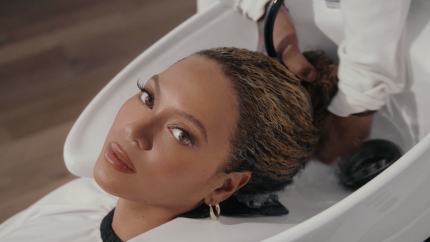
Beyoncé celebrates the ‘Cécred’ nature of hair care with her newest business venture

Celebrity hairstylist Kendall Dorsey on protecting natural hair with ‘Dark and Lovely’ latest collection
Jasmine Hardy

Is Hollywood finally listening to actors’ cries for diversity behind the scenes?

Zendaya names her biggest challengers in Vogue
TheGrio Lifestyle

9 Black groundbreaking women who were about their business

The original influencers: Black women who revolutionized the beauty industry
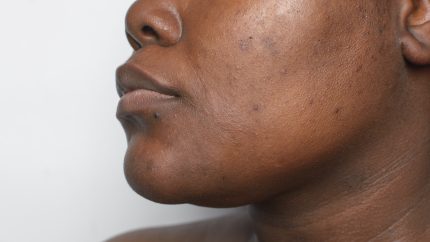
Did L’Oréal just stumble upon the magic ingredient to combat hyperpigmentation?
Jemison Jr. shared that he feels the scholarship opportunities will “definitely” motivate those aspiring to work in the beauty industry, “but just [don’t] know the steps to take.”
He added, “And so to see somebody that they might idolize, somebody that comes from the same hometown as they do, that has made it, [and] has used their platform to give back to the community and also show a statement of, ‘You can do it!'”
McGregor also explained that through this initiative, the organization aims to “tell a broader story” about the “longstanding” culture of Black haircare in this country.
“What better school than Franklin Institute to tell that longstanding story, with a history of having served Houston and surrounding areas for so many years?” she noted.
This mission is also personal for McGregor, who, much like Beyoncé, also grew up in Black hair salons.
“It’s where you will hear anything talked about. It’s the conversation where you’ve got somebody that’s hilarious and making everybody laugh. You’ve got some woman that’s the tenured woman in the community that’s offering everybody wisdom, right? You have all of these stories, and everybody’s in a safe space to share,” she explained. “It’s an apex. It’s a center of culture in our community.”
- Share on Facebook Facebook
- Share on Twitter Twitter
- Share via Email Email
- Copy Link Copy Link Link Copied

STREAM FREE MOVIES, LIFESTYLE AND NEWS CONTENT ON OUR NEW APP
- Business for Sale
- Agency Search
- › Sydney Region
- › North Shore - Lower
- › North Sydney
- › Beauty, Health & Fitness
- › Beauty Salon

Beauty Salon business for sale in North Sydney
- Beauty Salon
- North Sydney NSW 2060
- $150,000 + SAV
Profitable & Managed Hair Salon , Looks Amazing, North Shore, Sydney, (nk.)
Great salon where the owner is willing to stay on ad manage the salon for you!
Cheap rent and ready to walk into this - this one is a no brainer!
Lucrative Hair Salon with onw owner ( willing to stay on) and a rent a chair too, bringing in income
Highly profitable and well-established hair salon located in the desirable North Shore area of Sydney.
6 stations and 3 basins, providing a great layout and beautiful space for both clients and stylists.
With a strong reputation built over the years, this salon has consistently proven its profitability to $104k per year.
Moreover, the additional chair rental income further contributes to its financial success.
The salon's prime location in North Shore Sydney is a major advantage.
At an affordable rent of $27k (approx) per year, the salon presents an attractive investment opportunity.
Don't miss out on this golden opportunity to own a highly profitable and well-established hair salon in the coveted North Shore Sydney.
Contact Nikki Katz on 0420 205021 or email [email protected] for more details
Business Highlights
Enquire about this property
By sending this message, you agree to our Privacy Policy
More Beauty Salon businesses for Sale in North Sydney
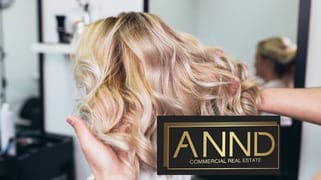
Colorado News | A Wheat Ridge hair salon celebrates 60 years in…
Share this:.
- Click to share on Facebook (Opens in new window)
- Click to share on Reddit (Opens in new window)
- Click to share on Twitter (Opens in new window)
Digital Replica Edition
- Latest Headlines
- Environment
- Transportation
- News Obituaries
Colorado News
Colorado news | a wheat ridge hair salon celebrates 60 years in business as it closes down: “it’s like family here”, dee lombardi took over beauty inc. in 1964, when it was in north denver, and ran it until her death.

When Lucy Nichols lived in Arvada in the 1970s, she chose Beauty Inc. as the place to get her hair done — first in Denver, then in Wheat Ridge after the business moved.
She continued going to the family-run hair salon even when she lived in Watkins, nearly 30 miles away. Same story after Nichols, 71, moved to Westminster and then to Longmont, where she lives today.
“This was always my go-to,” she said while sitting for a last hair appointment this week at the venerable beauty shop on West 44th Avenue, half a century after her first cut. “It’s like family here.”
But the matriarch of the family business, Dolores “Dee” Lombardi, died two-and-a-half years ago. And on Saturday, Beauty Inc. will close its doors — 60 years and one day after Dee bought the salon.
Joe DeMott owns Pietra’s Pizzeria & Italian Restaurant in Wheat Ridge, which is proudly marking its own 60th year in business this year. His pizzeria is less than two miles down West 44th Avenue from Beauty Inc.
“It’s amazing to see anything go to 60 years,” said DeMott, who is a distant cousin of the Lombardi family. “It’s definitely a dying thing” — and, in Beauty Inc.’s case, the closure saddens him.
It’s the latest demise of a longtime local business in metro Denver. Federal Heating closed last year after 84 years , while New Saigon shut its doors last month after serving up Vietnamese cuisine in Denver for more than four decades.
While it was in business, Beauty Inc. was a hub of activity for the community, especially for Italian-Americans in north Denver and those who moved west to the suburbs over the years — just like the hair salon did.
Its first two locations were in Denver, at 44th and Decatur Street and then at 44th and Lowell Street. It landed at 44th and Jay Street in Wheat Ridge in 1982.
“Everybody in north Denver knew about Beauty Inc.,” said Kathy Peppel, Dee’s younger sister, who at 72 has worked at the salon for 37 years. “People felt so welcome.”
The secret was soon out.
“We have people come from the mountains, from Bailey, from Windsor and from Parker,” said Peppel, who has never worked anywhere but at her sister’s salon.
Customers met at Beauty Inc. to show off newborn babies, a new puppy or the latest car they’d purchased.

“It was a very social gathering place where everyone wanted to be,” said Dee’s daughter, Pauletta Tonilas, who worked as a receptionist at Beauty Inc. as a kid. “It was the hip place to get your hair done.”
The business was also decidedly old school, accepting only cash or checks for payment, right up until closing this week.
Many of its hair stylists have stuck around — Janna was still cutting hair there this week after 43 years and Grace Ann retired from the chair and mirror at age 82, while John, who’s in his 80s, still works at Beauty Inc.
“I love doing hair and Dee was a wonderful boss,” Janna Falbo, 71, said as she worked on one of her final customers this week. “This was my second home.”
Dee’s niece, Lori Rushton, has worked the front desk at Beauty Inc. several days a week since 1980. The customers were so loyal, she said, that they were greeted by name.
And many had “standing” appointments — same day, same time, same station.
“When all the seats were full, you didn’t need a clock to tell you what time it was — you could tell the time by who was walking through the door,” Rushton said. “We’re losing a place where people gathered. It’s going to be very hard.”
Dee Lombardi took over Beauty Inc. from the original owner on March 29, 1964. It was a rare move by a woman back then, Tonilas said. After her mother got divorced, she kept cutting hair while trying to raise two children.

“She was remarkable in how she provided a great life for me and my brother,” Tonilas said.
Dee got married again, this time to Skip Jutze, a professional baseball player who started as a catcher for the Denver Bears minor league team before playing for the St. Louis Cardinals, the Houston Astros and the Seattle Mariners during that team’s maiden season in 1977.
They, too, eventually divorced, Tonilas said — and then it was just her mother and her beloved hair salon.
“She never had to advertise. It was all word of mouth,” said Tonilas, who previously worked for several years as communications director for the Regional Transportation District.
In her later years, Lombardi was diagnosed with leukemia. She worked right up until she died in September 2021, at 80. In her obituary published in The Denver Post , she was lauded for her tenacity in “powering through the effects of leukemia to continue to bring happiness, smiles and laughter to her customers and coworkers as she did throughout her whole career.”
“She worked (while) not feeling good a lot,” Tonilas said of those final months.
Tonilas and her brother thought long and hard about what to do with Beauty Inc. after their mother’s death.
In the end, they sensed headwinds that would make it difficult to keep a small business afloat in the face of a changing retail landscape and other forces they couldn’t control. Like a global pandemic — which it had already survived, but not without some bumps and bruises.

On March 19, 2020, Gov. Jared Polis ordered a six-week closure of all hair salons in the state .
“COVID was a severe impact on hair salons,” Tonilas said. “That was the start of the nail in the coffin for Beauty Inc.”
Some customers never came back, she said, having learned to style or color their hair at home while in lockdown. And of the customers whose loyalty brought them back to Beauty Inc. as soon the business was allowed to reopen, Father Time was not on their side.
“The clientele has decreased over the last few years,” Tonilas said. “A lot of the customers are older or have passed away.”
Add to that an ongoing labor shortage and a historic run-up in property taxes in Colorado, and Tonilas said it became evident that it was time to shut the doors.
The closure of Beauty Inc. at the same time it marks its 60th anniversary is a bittersweet confluence of events, Tonilas said. But the business’ longevity under her mother’s leadership is something she is immensely proud of.
“I think it’s significant for a business to celebrate 60 years,” she said. “There are not many businesses these days that last for 60 years.”

Get more Colorado news by signing up for our daily Your Morning Dozen email newsletter.
- Report an Error
- Submit a News Tip
More in Colorado News

Election | Colorado officials warn of new frontier in election denial as more Republicans refuse to certify vote totals

Crime and Public Safety | $2,000 reward offered for tips in Littleton teen’s shooting death

Crime and Public Safety | Former Fort Collins youth pastor arrested on child sexual assault charges may have more victims, officials say

Politics | Colorado lawmaker apologizes for leaving gun in Capitol bathroom

IMAGES
COMMENTS
The 7 elements of an effective hair and beauty salon business plan. 1. Executive Summary. The executive summary provides a high-level overview of your business plan. It should outline the objectives of your hair and beauty salon, such as to offer high-quality services, to expand the client base, or to break into a new market.
Below is a salon business plan example to help you create your own beauty salon business plan. Executive Summary Business Overview. Major Lengths Beauty Salon is a newly established hair and beauty bar located in Glendale, Arizona that is founded by Jenna Diaz, a local hair stylist and aesthetician that has worked in the industry for over 15 years.
Here we've broken down the entire process into 7 easy-to-follow, foolproof steps, along with their templates, to help you create a successful salon business plan. Write a mission and vision statement. Create an executive summary. Analyze and identify your target market. Perform a competitor analysis.
A business plan provides a snapshot of your salon as it stands today, and lays out your growth plan for the next five years. It explains your business's goals, business model, the type of services you will offer (beauty services, spa services, nail services, skin care services and/or hair salon services), management team, target market, and a marketing plan for the many ways you can reach ...
The spa and salon market stood at an impressive value of $138.9 billion in 2020, and as people continue to return to salons after the pandemic, the market's value is expected to rise at a higher rate. The rise in personal care and beauty spending is one of the major reasons for the growth of the hair salon industry.
Hair Salon Business Plan Template. If you want to start a hair salon business or expand your current one, you need a business plan. Over the past 20+ years, we have helped over 5,000 entrepreneurs and business owners create business plans to start and grow their hair salons.
1. Create an Executive Summary. The executive summary is the first section of your business and management plan and provides a brief overview of your salon business. This section should include your mission statement, business objectives, target market, products and beauty services, and financial projections.
6 steps to creating a hair salon business plan. Let's dissect the key components of a hair salon business plan: 01. Executive summary. The executive summary is a concise overview of your entire hair salon business plan. It provides a snapshot of your business concept, strategies, financial projections and objectives.
Sales forecast - total sales expected over the next several years. Expenses budget - all the costs you need to operate. Profit and loss (P&L) statement - a 12-month summary of revenue versus expenses. Cash flow statement - how cash moves in and out of your business, including monthly payments.
Developing a robust business plan will enable you to: learn about the hair salon market. be aware of new consumertrends and apply them to your project. identify factors for viability in a hair salon. understand the latest hair trends, styling preferences, and customer expectations in salon services.
Our salon business plan template works for all types of salons, including: Hair or Beauty Salons: which most commonly include hair-cutting, coloring and styling hair and other beauty services. Nail Salons: which typically include nail treatments, manicures and pedicures. Hair Removal Salons: commonly include waxing and other forms of hair ...
Start by analyzing what different hair cutting, hair care, and beauty services the competition offers, as it will give you an idea of what the local market expects from a hair salon. This step of your beauty salon business plan should start from your immediate competition - neighborhood or city - but not leave out important salons from ...
6. Identify Products and Services You Wish to Offer. This part of your salon business plan lays out all the different services that your salon will offer its customers. You can expect a wide range of services, from haircuts, styling, coloring, treatments, manicures, pedicures, facials, and many more.
A business plan has 2 main parts: a financial forecast outlining the funding requirements of your beauty salon and the expected growth, profits and cash flows for the next 3 to 5 years; and a written part which gives the reader the information needed to decide if they believe the forecast is achievable.
The hair salon industry continues to be a lucrative market, with revenue exceeding $46 billion in 2018 and showing continued growth. For aspiring beauty-focused entrepreneurs, this presents a perfect opportunity to start their own hair salon. However, starting a successful salon requires careful planning and strategic implementation.
A salon business plan is a formal document that outlines your strategy for starting and running your hair and beauty salon. It usually consists of several parts and covers various aspects of the business including the company's backstory, products and services, financials, sales, management, and more. A business plan also outlines your goals.
We offer all beauty services including eyebrow threading, waxing, eyebrow tinting, ... You can now request an appointment from this business directly from Yelp. Request an Appointment. 1 local recently requested an appointment. Phone number ... Other Hair Salons Nearby. Find more Hair Salons near Ruth's Salon & Spa. About. About Yelp; Careers ...
Lifestyle. Beyoncé makes a big investment in Black hair schools, including Tina Knowles' alma mater. Beyoncé's Cécred x BeyGOOD Fund will benefit one of the oldest Black hair schools in the ...
The salon's prime location in North Shore Sydney is a major advantage. At an affordable rent of $27k (approx) per year, the salon presents an attractive investment opportunity. Don't miss out on this golden opportunity to own a highly profitable and well-established hair salon in the coveted North Shore Sydney.
A Wheat Ridge hair salon celebrates 60 years in business as it closes down: "It's like family here" Dee Lombardi took over Beauty Inc. in 1964, when it was in north Denver, and ran it until ...
Get directions to Ulitsa Yalagina, 3 and view details like the building's postal code, description, photos, and reviews on each business in the building ulitsa Yalagina, 3 Elektrostal, Moscow Region, 144010
Get directions to Karla Marksa Street, 51 and view details like the building's postal code, description, photos, and reviews on each business in the building
Laser hair removal salon Zone krasoti. ... Business hours unknown. Clothing store. Lenina Avenue, 29. Payment terminal. Payment terminal. ... Beauty salon. Lenina Avenue, 29. Косметолог эстетист Виктория ...
Printi.rf Pechatnyy Salon. Kopiroval'nyy Tsentr I Tipografiya. is a Copy shop located in Ulitsa Mira, 18, Elektrostal, Moscow Oblast, RU . The business is listed under copy shop, advertising agency, commercial printer, digital printer, graphic designer, photo shop, print shop category. It has received 47 reviews with an average rating of 4.7 stars.